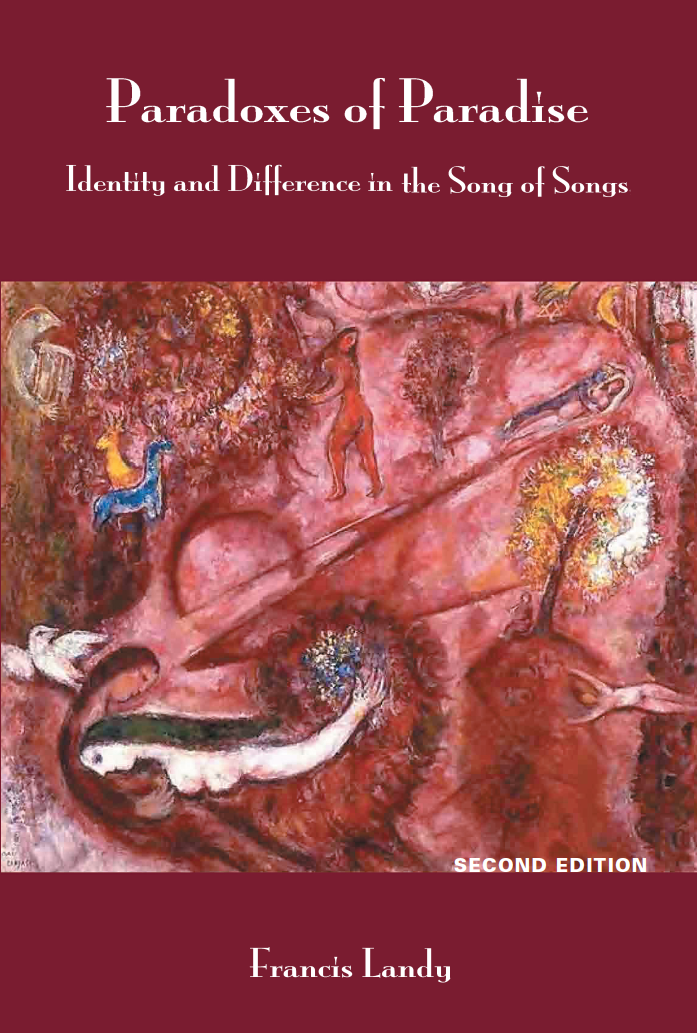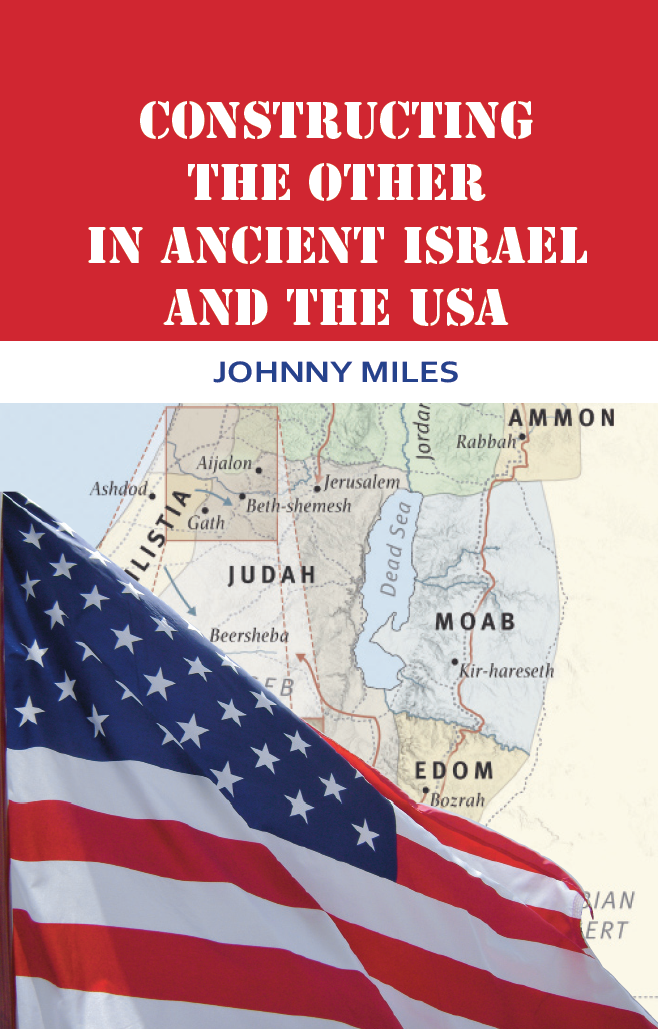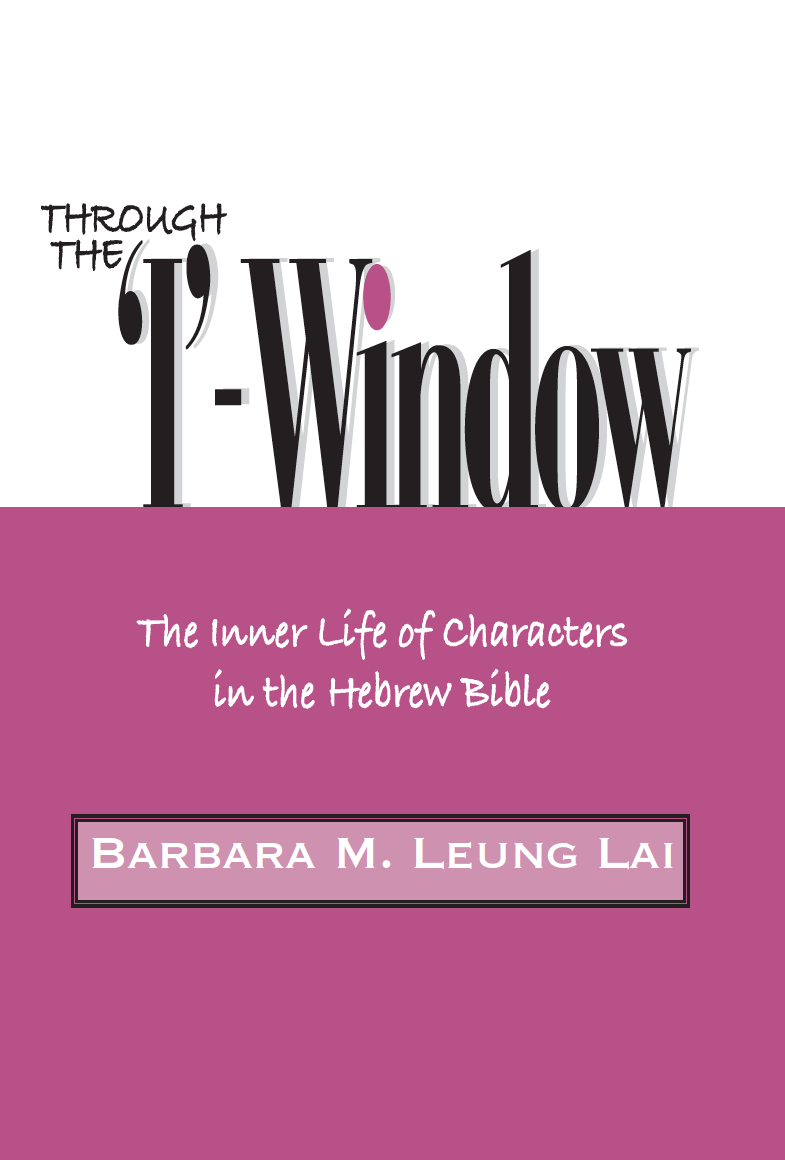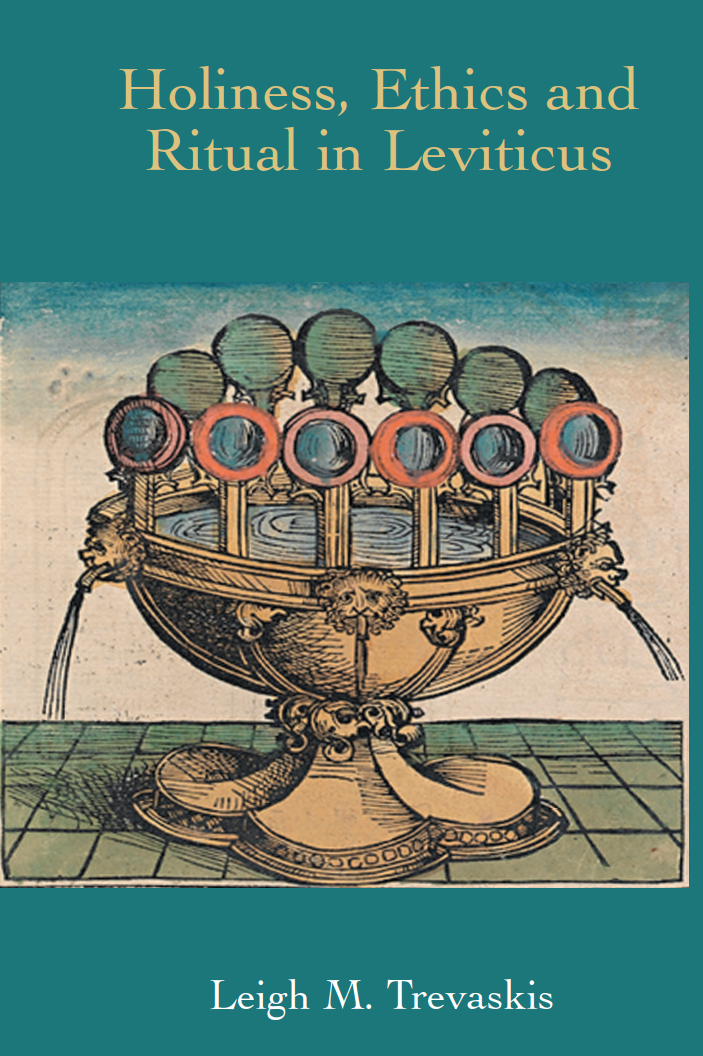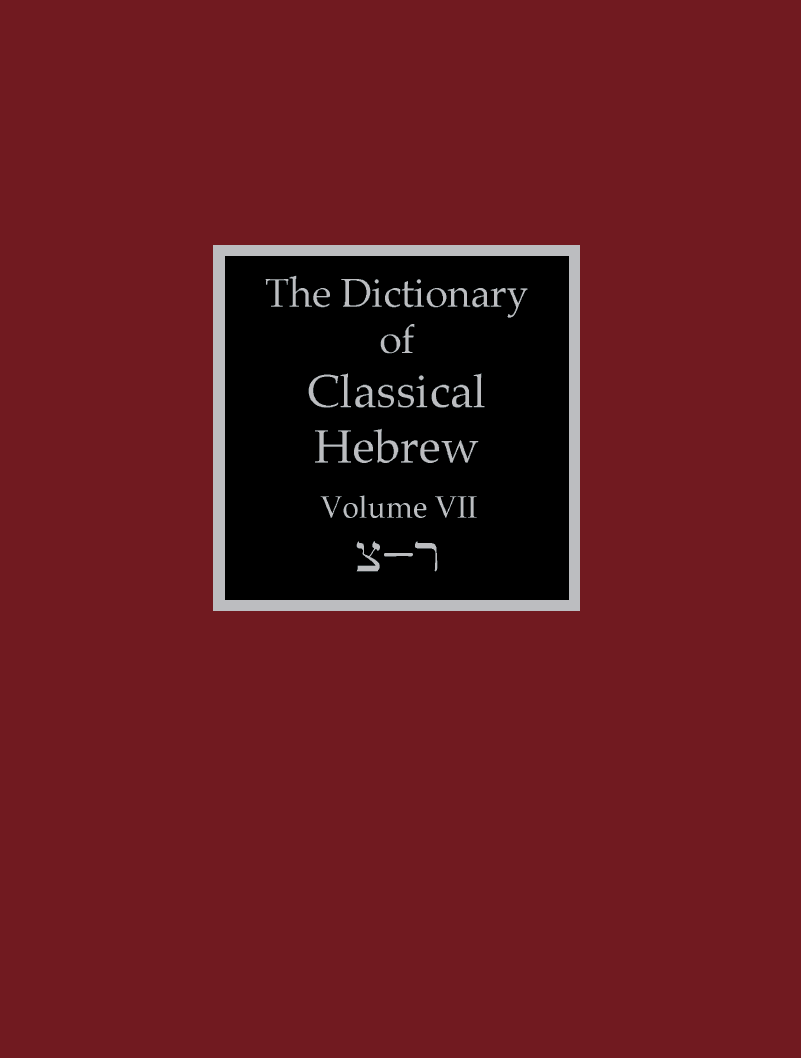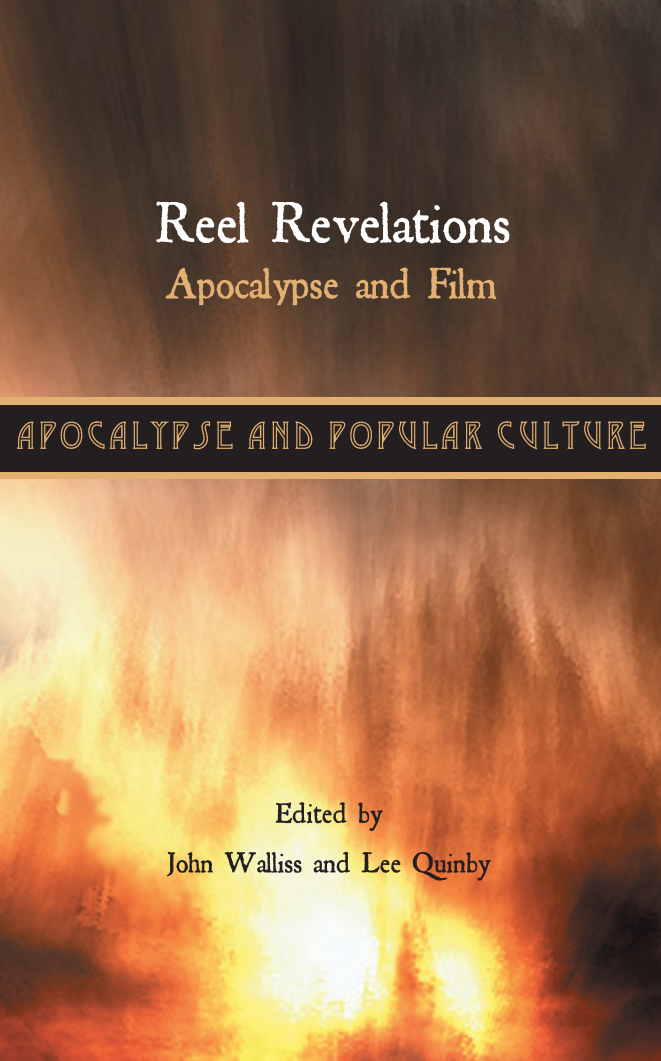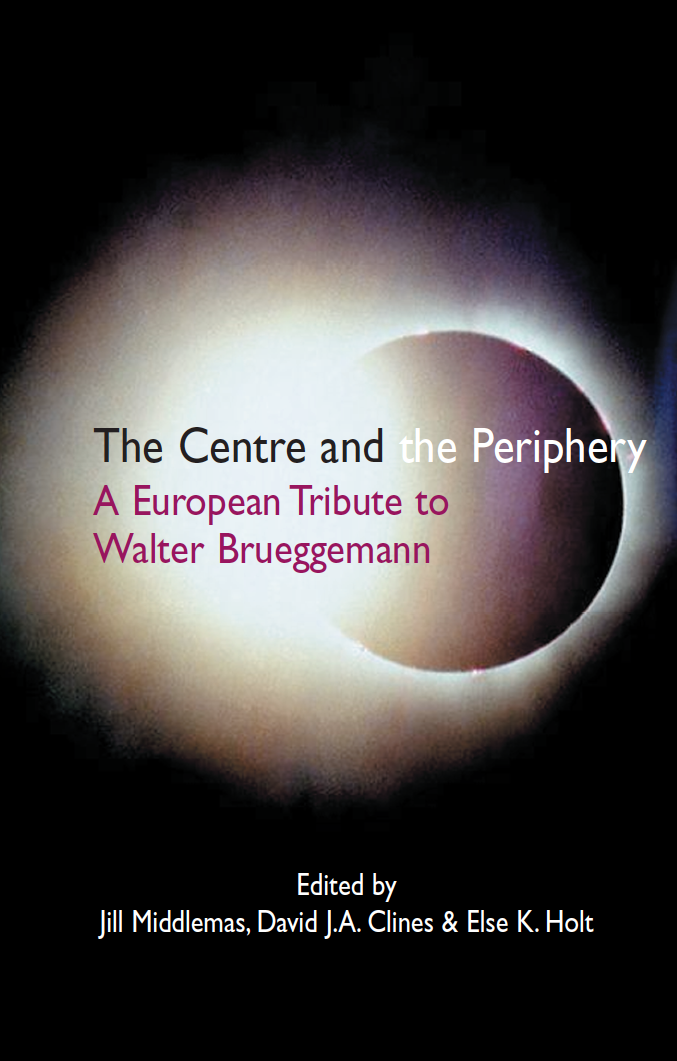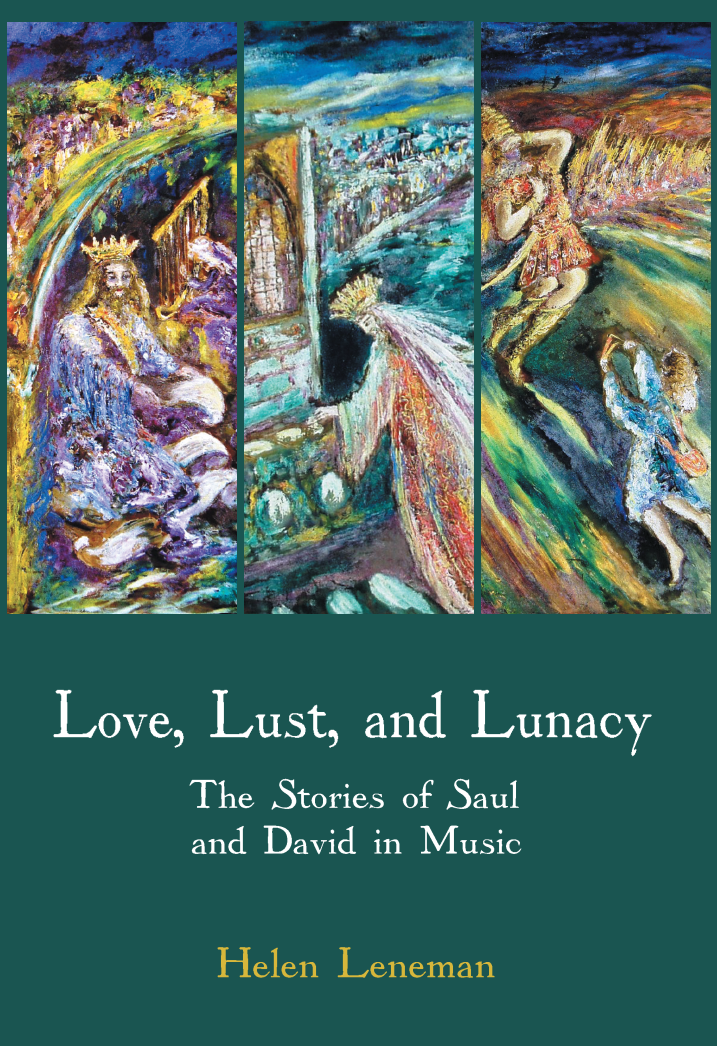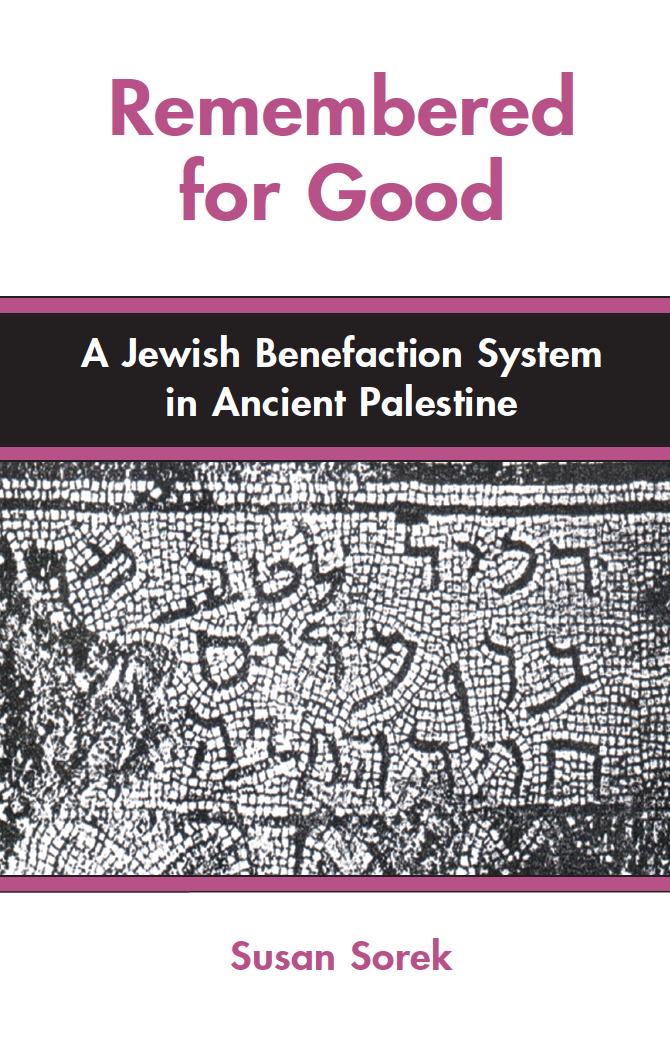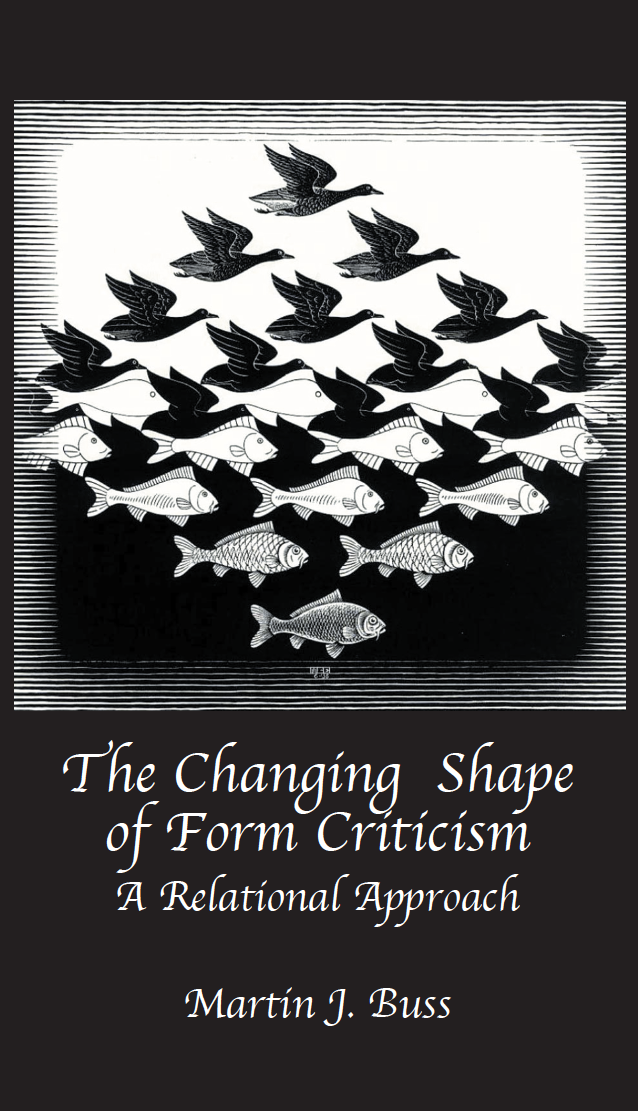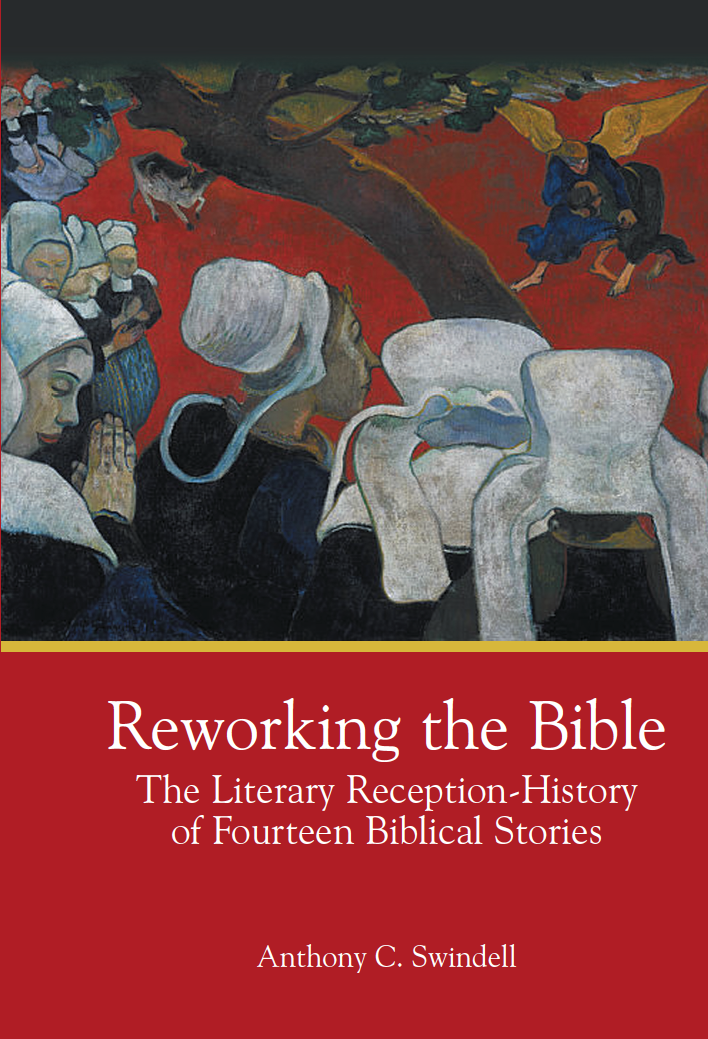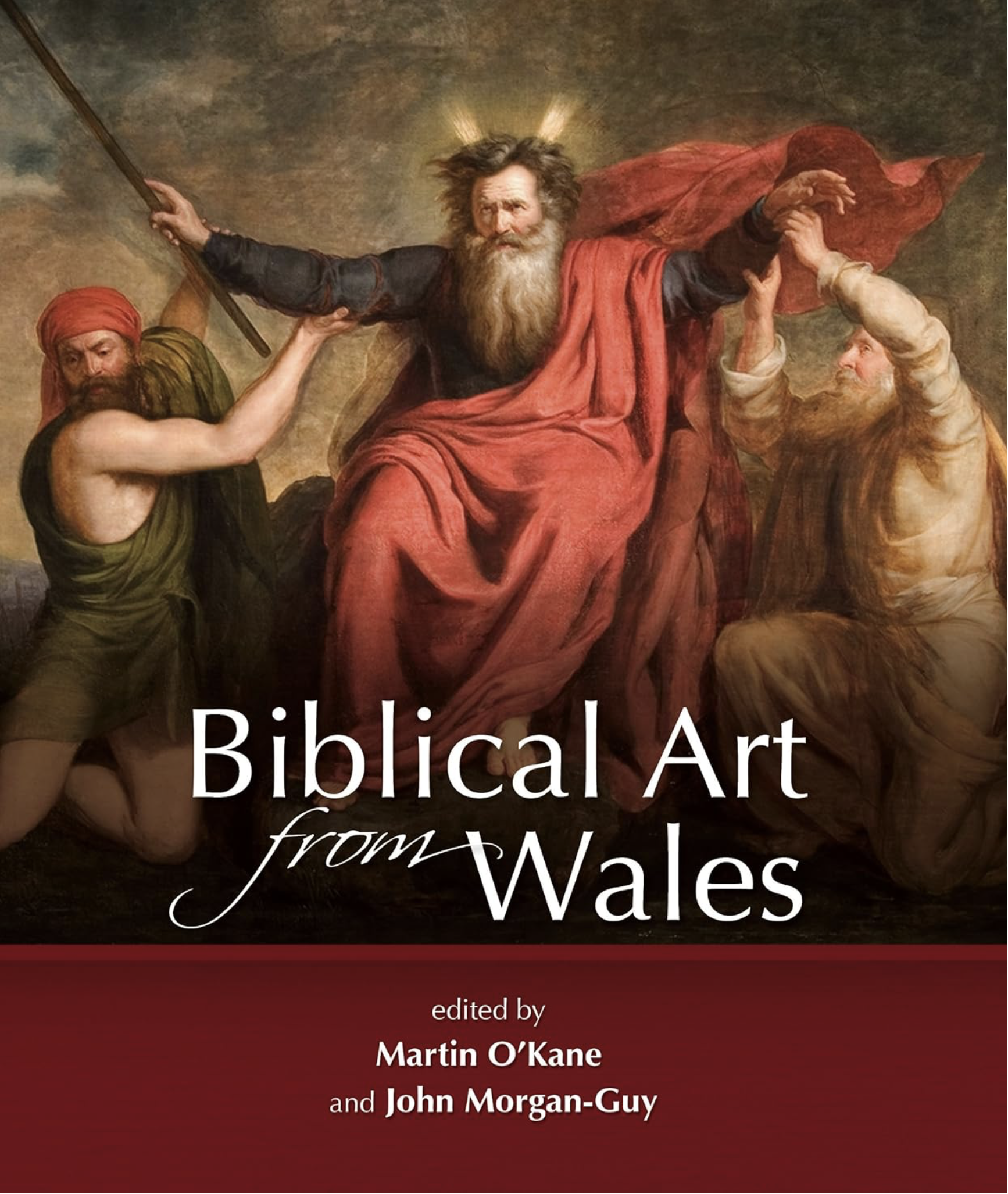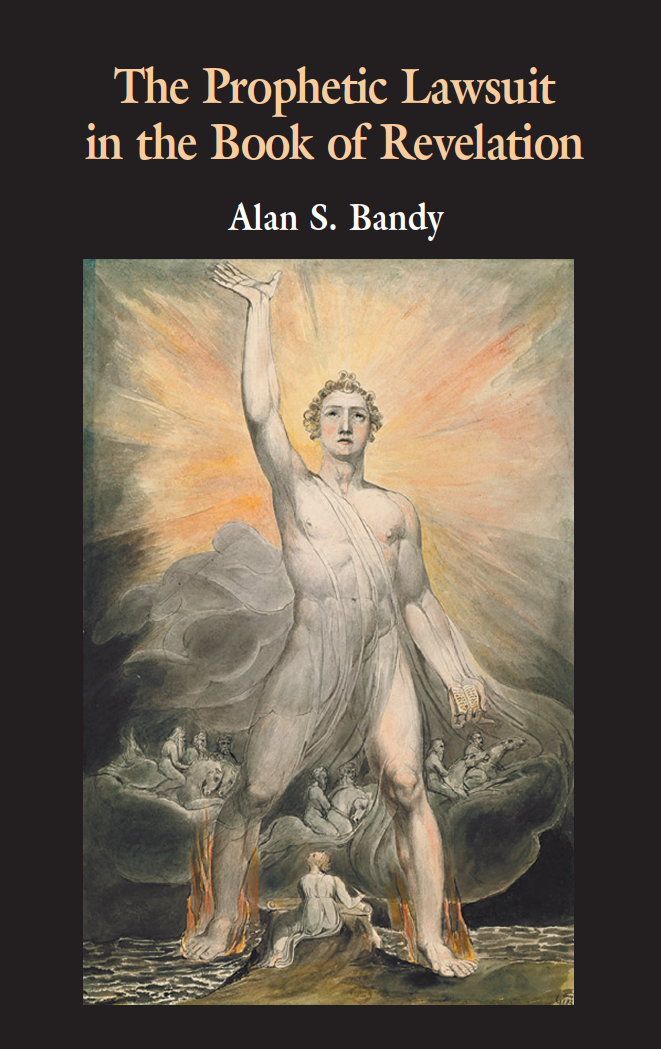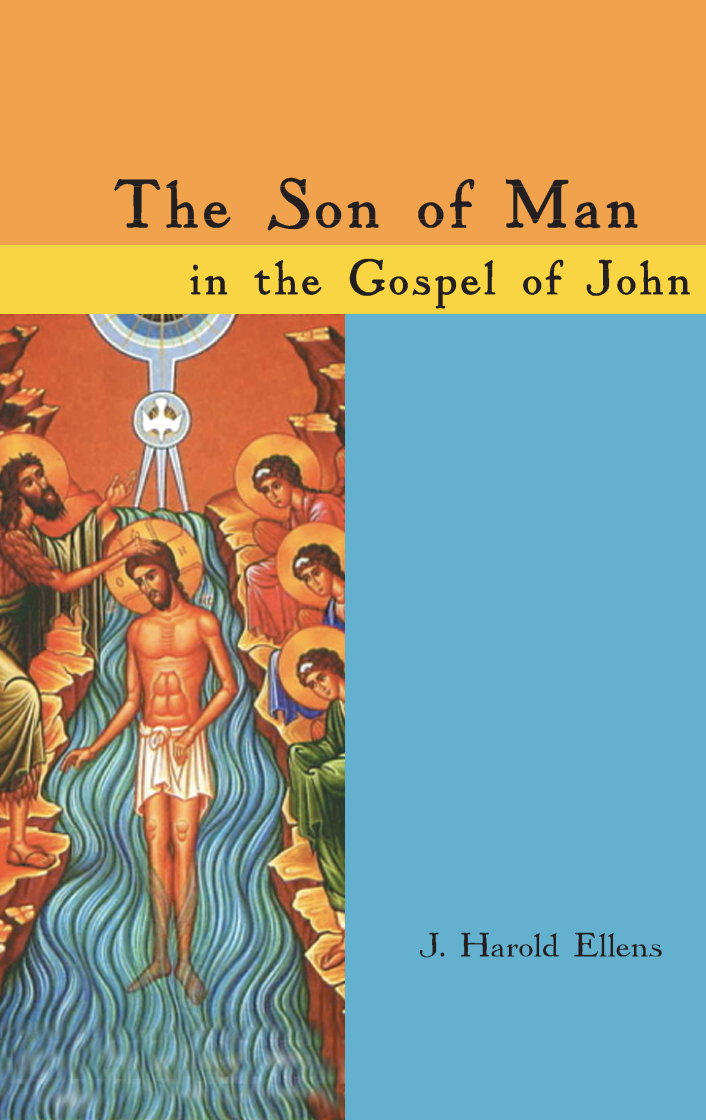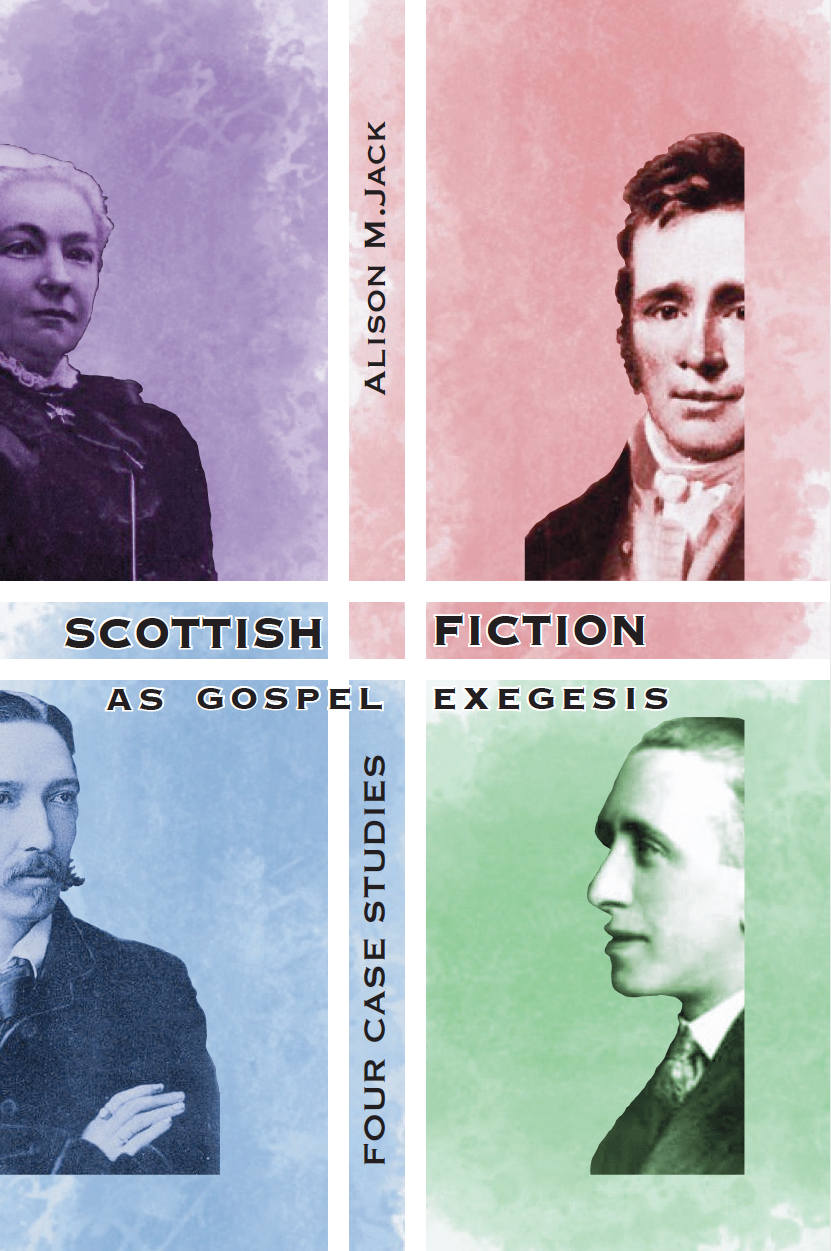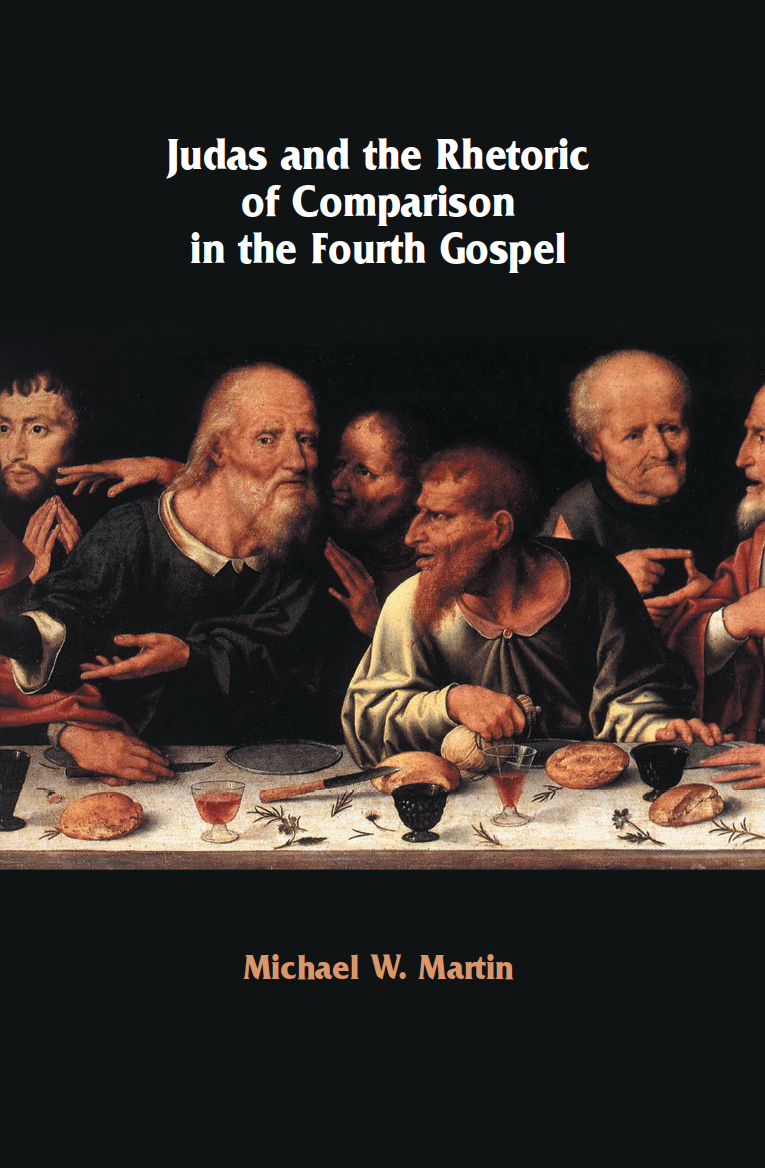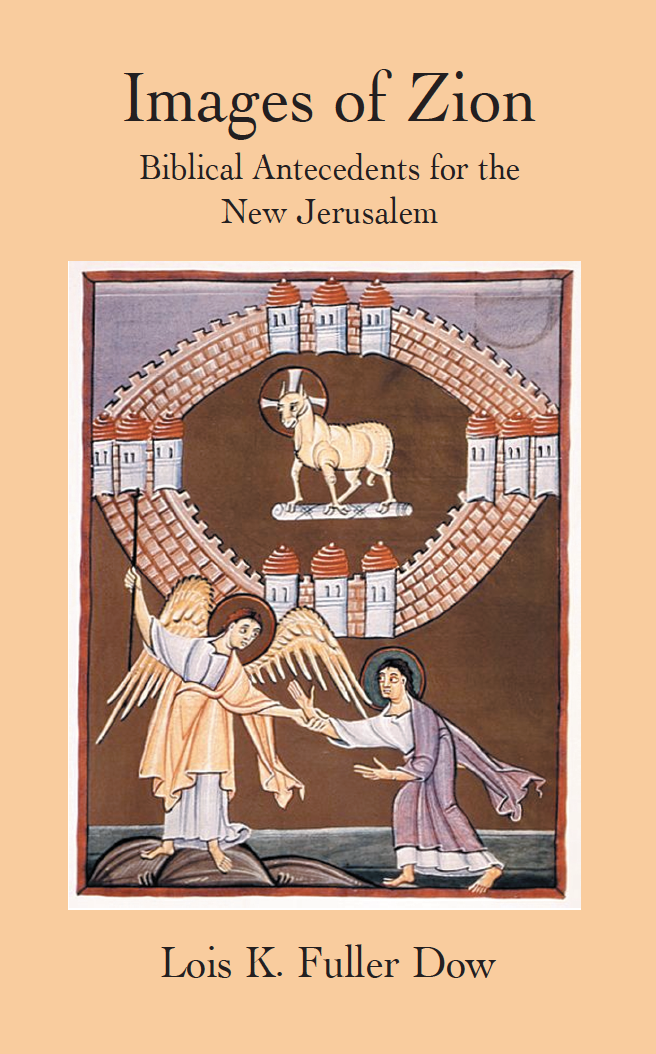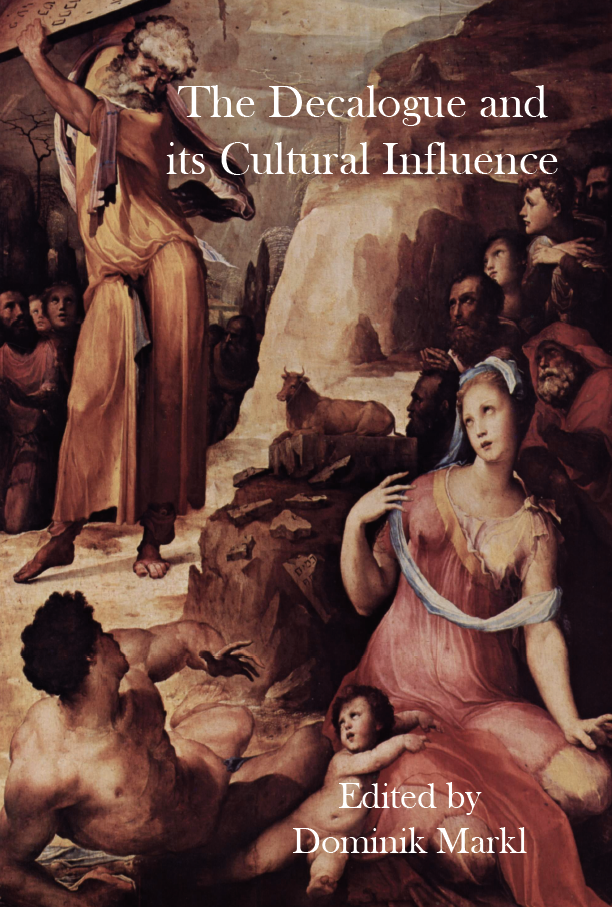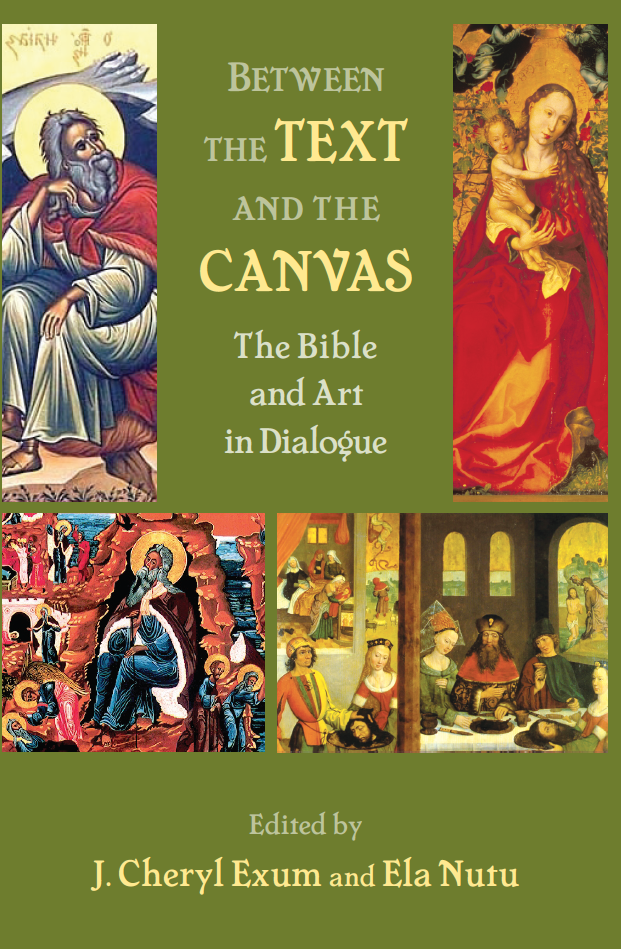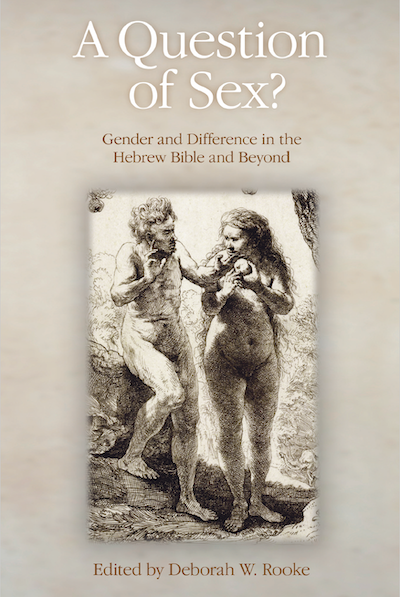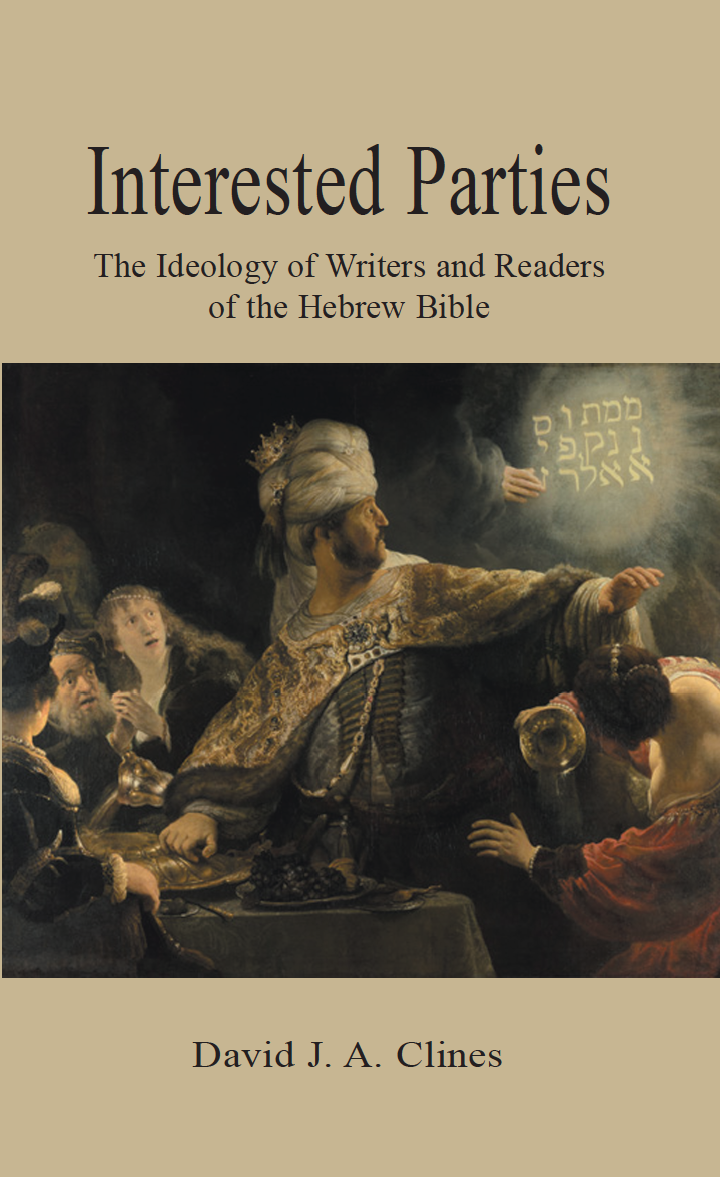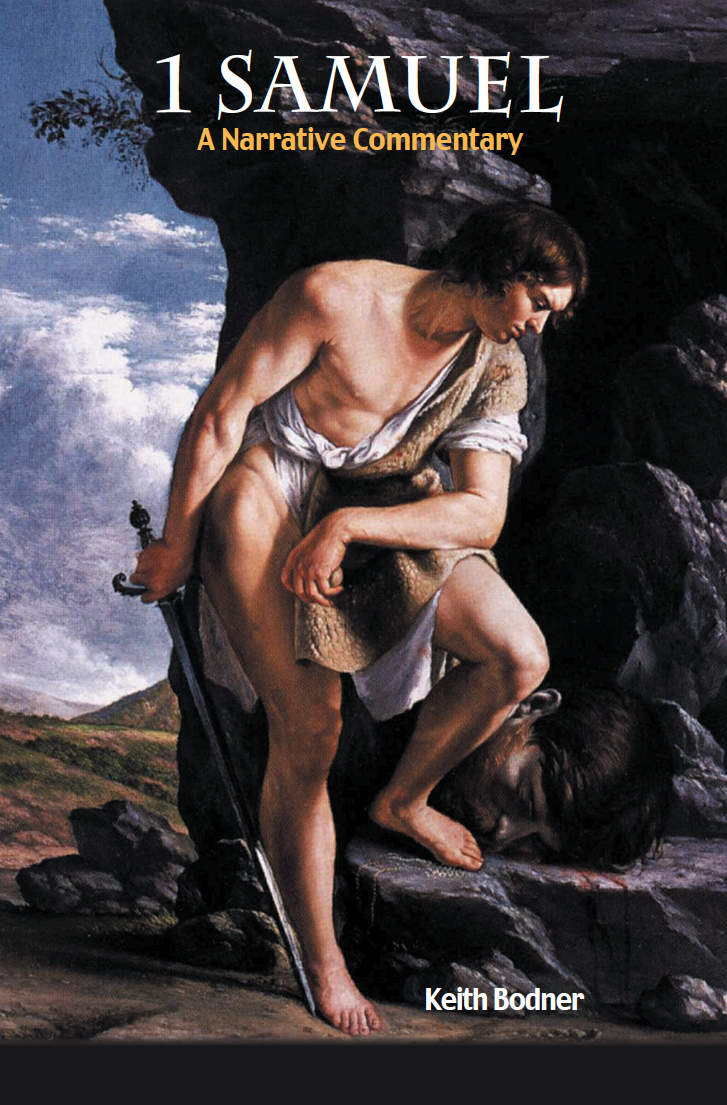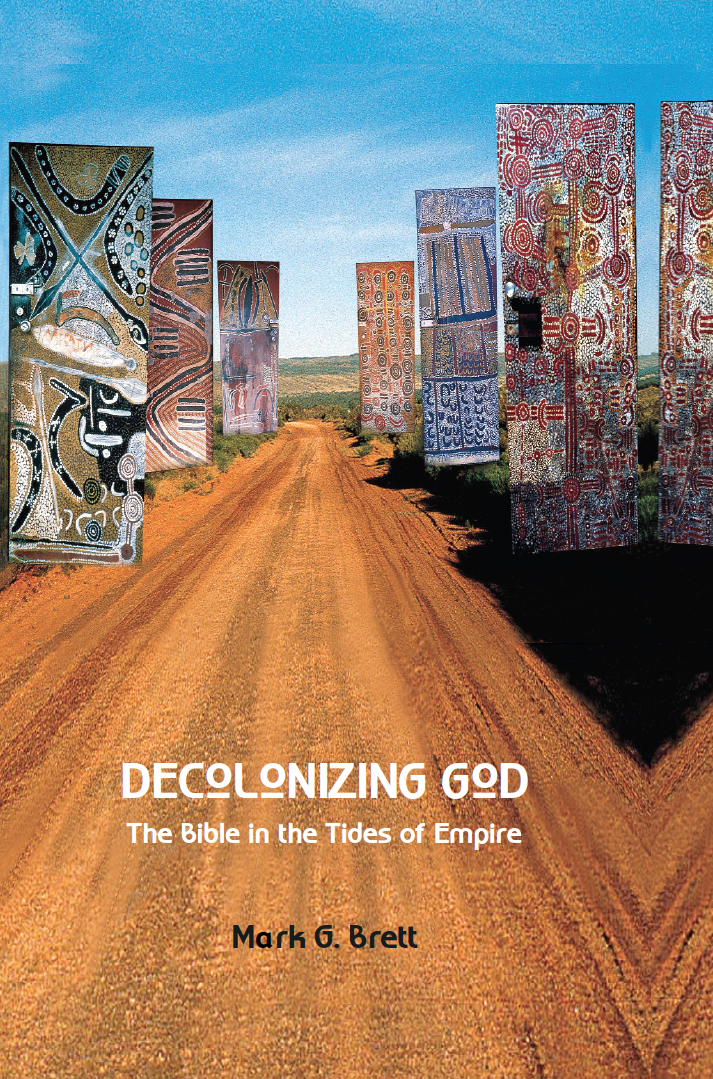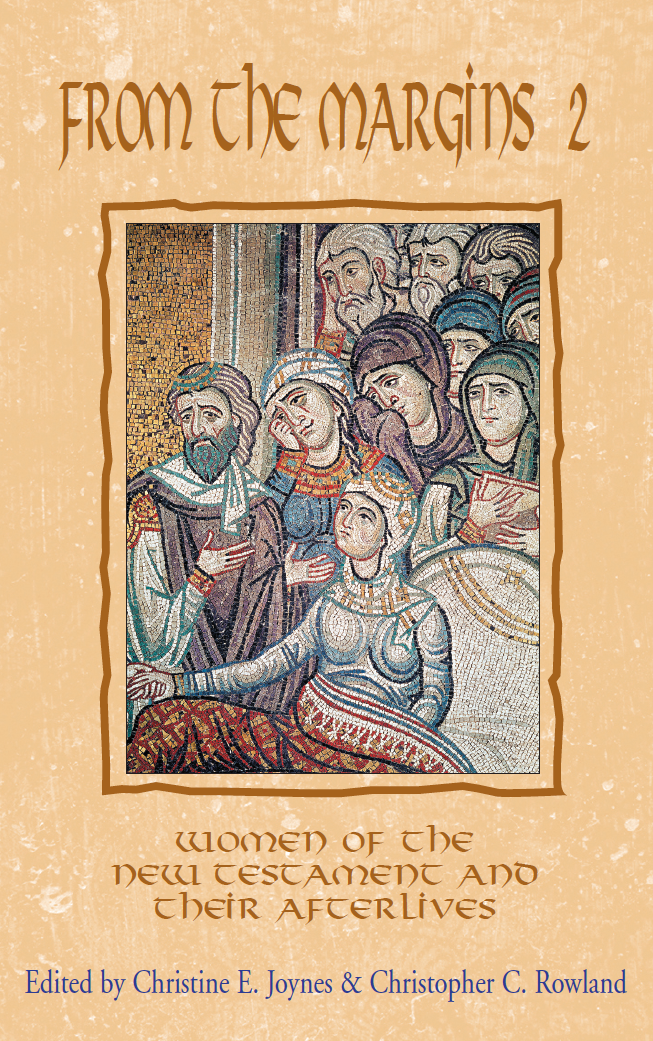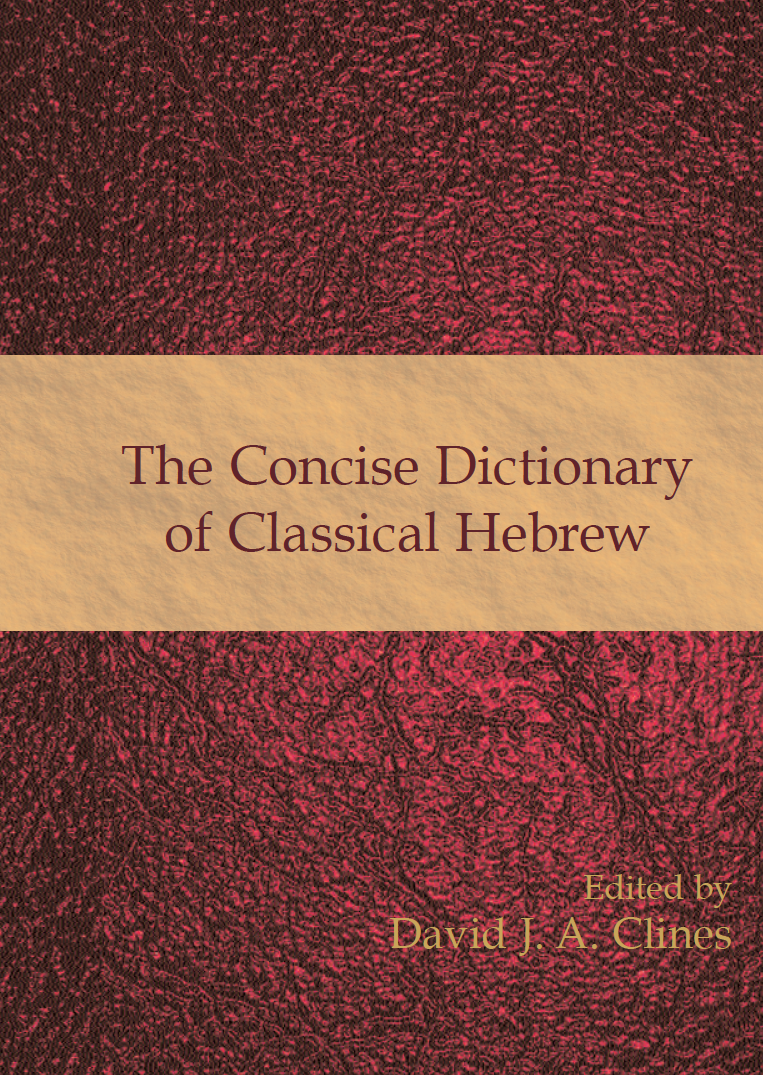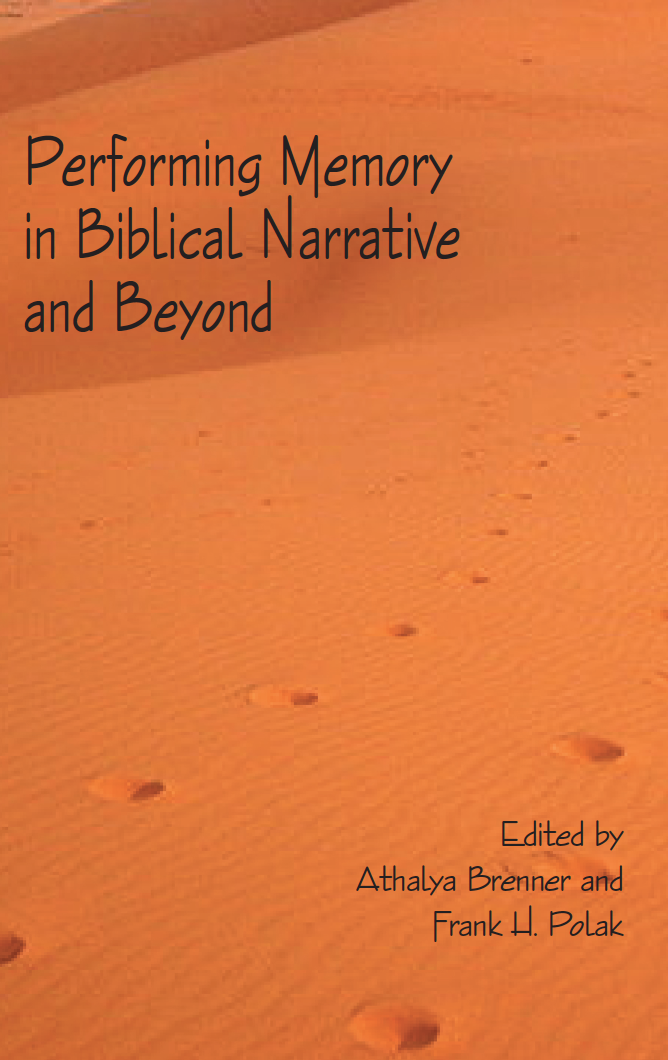Paradoxes of Paradise: Identity and Difference in the Song of Songs, Second Edition
Published: May 2011
£22.50
Rabbi Akiba is famously reported to have said, 'Heaven forbid that any one in Israel ever disputed that the Song of Songs is holy, for the whole world is not worth the day on which the Song of Songs was given to Israel, for all the writings are holy, but the Song of Songs is the Holy of Holies'. This book is an extended elaboration of Rabbi Akiba's statement. It argues that the Song is a Hellenistic composition, drawing on the resources of ancient Near Eastern erotic poetry and characterized by a complex though fragile unity.
Through the metaphors, the lovers progressively see themselves reflected in each other, as well as in the world about them and the poetry of love. The poem celebrates the land of Israel in spring, an ideal humanity, and a perfected language. It culminates in the contestation of love and death, and the assertion that only love survives the exigencies of time.
The pervasive ambiguity of the Song, in which one never quite knows what happens, is related to the ambivalence of beauty, which is closely related to ugliness. Hence the surrealist imagery of the Song verges upon the grotesque and stretches the resources of our imagination. Through a detailed comparison with the Garden of Eden story, Landy argues that the Song is a vision of paradise seen from the outside, through the ironic poetic gaze, in a world potentially hostile or indifferent.
Paradoxes of Paradise: Identity and Difference in the Song of Songs, Second Edition
£22.50
Rabbi Akiba is famously reported to have said, 'Heaven forbid that any one in Israel ever disputed that the Song of Songs is holy, for the whole world is not worth the day on which the Song of Songs was given to Israel, for all the writings are holy, but the Song of Songs is the Holy of Holies'. This book is an extended elaboration of Rabbi Akiba's statement. It argues that the Song is a Hellenistic composition, drawing on the resources of ancient Near Eastern erotic poetry and characterized by a complex though fragile unity.
Through the metaphors, the lovers progressively see themselves reflected in each other, as well as in the world about them and the poetry of love. The poem celebrates the land of Israel in spring, an ideal humanity, and a perfected language. It culminates in the contestation of love and death, and the assertion that only love survives the exigencies of time.
The pervasive ambiguity of the Song, in which one never quite knows what happens, is related to the ambivalence of beauty, which is closely related to ugliness. Hence the surrealist imagery of the Song verges upon the grotesque and stretches the resources of our imagination. Through a detailed comparison with the Garden of Eden story, Landy argues that the Song is a vision of paradise seen from the outside, through the ironic poetic gaze, in a world potentially hostile or indifferent.
Jonathan Loved David: Manly Love in the Bible and the Hermeneutics of Sex
Published: Mar 2011
£60.00
The relationship between the Hebrew heroes David and Jonathan has caught the attention of popular and scholarly writers alike. Yet there is little agreement about the nature of this relationship that speaks of a love between two men that 'surpasses the love of a man for a woman' (2 Sam. 1.26). Weighing the arguments of scholars including Nissinen, Stone and Zehnder, Heacock produces a meta-critical analysis of the many interpretations of the relationship between David and Jonathan, identifying three dominant readings: the traditional political-theological interpretation, the homoerotic interpretation, and the homosocial interpretation.
After outlining the three interpretive approaches, Heacock considers the evidence cited to support each: namely, themes in the David and Jonathan narrative and related biblical texts, ancient political treaties, laws pertaining to homogenital behaviour in the ancient Mediterranean world, and the heroic tales of the Gilgamesh Epic and Homer's Iliad. By applying recent epistemological shifts in knowledge as developed in the interdisciplinary fields of sexuality studies, queer studies and ancient studies, Heacock emphasizes the inescapability of the modern reader's cultural context when reading the narrative, particularly the influence of modern discourses of sexuality.
Rather than suggest an alternative historical reading, Heacock turns the debate on its head by abandoning claims to historical veracity and embracing the input of the contemporary queer reader. Using queer theory and reader-response criticism, he offers a reading of the relationship between David and Jonathan through the lens of contemporary gay male friendships. This queer reading not only celebrates manly love in its numerous forms, but also adds a self-critical voice to the discussion that exposes the heteronormative assumptions underlying the questions often asked of the narrative.
Jonathan Loved David: Manly Love in the Bible and the Hermeneutics of Sex
£60.00
The relationship between the Hebrew heroes David and Jonathan has caught the attention of popular and scholarly writers alike. Yet there is little agreement about the nature of this relationship that speaks of a love between two men that 'surpasses the love of a man for a woman' (2 Sam. 1.26). Weighing the arguments of scholars including Nissinen, Stone and Zehnder, Heacock produces a meta-critical analysis of the many interpretations of the relationship between David and Jonathan, identifying three dominant readings: the traditional political-theological interpretation, the homoerotic interpretation, and the homosocial interpretation.
After outlining the three interpretive approaches, Heacock considers the evidence cited to support each: namely, themes in the David and Jonathan narrative and related biblical texts, ancient political treaties, laws pertaining to homogenital behaviour in the ancient Mediterranean world, and the heroic tales of the Gilgamesh Epic and Homer's Iliad. By applying recent epistemological shifts in knowledge as developed in the interdisciplinary fields of sexuality studies, queer studies and ancient studies, Heacock emphasizes the inescapability of the modern reader's cultural context when reading the narrative, particularly the influence of modern discourses of sexuality.
Rather than suggest an alternative historical reading, Heacock turns the debate on its head by abandoning claims to historical veracity and embracing the input of the contemporary queer reader. Using queer theory and reader-response criticism, he offers a reading of the relationship between David and Jonathan through the lens of contemporary gay male friendships. This queer reading not only celebrates manly love in its numerous forms, but also adds a self-critical voice to the discussion that exposes the heteronormative assumptions underlying the questions often asked of the narrative.
Biblical Curses and the Displacement of Tradition
Published: Mar 2011
£70.00
In Biblical Curses and the Displacement of Tradition Brian Britt offers an intriguing perspective on curses as the focus of debates over the power, pleasure, and danger of words. Biblical authors transformed ancient Near Eastern curses against rival ethnic groups, disobedient ancestors, and the day of one's own birth with great variety and ingenuity.
Transformations of biblical curses proliferated in post-biblical history, even during periods of 'secularization'. This study argues that biblical, early modern, and contemporary transformations of curses constitute displacements rather than replacements of earlier traditions.
The crucial notion of displacement draws from Freud's psychoanalytic theory, Nietzsche's critical philosophy, and Benjamin's engagement with textual tradition; it highlights not only manifest shifts but also many hidden continuities between cursing in biblical texts and cursing in such 'secular' domains as literature, law, politics, and philosophy. The tradition of biblical cursing —neither purely 'religious' nor purely 'secular' —travels through these texts and contexts as it redefines verbal, human, and supernatural power.
Biblical Curses and the Displacement of Tradition
£70.00
In Biblical Curses and the Displacement of Tradition Brian Britt offers an intriguing perspective on curses as the focus of debates over the power, pleasure, and danger of words. Biblical authors transformed ancient Near Eastern curses against rival ethnic groups, disobedient ancestors, and the day of one's own birth with great variety and ingenuity.
Transformations of biblical curses proliferated in post-biblical history, even during periods of 'secularization'. This study argues that biblical, early modern, and contemporary transformations of curses constitute displacements rather than replacements of earlier traditions.
The crucial notion of displacement draws from Freud's psychoanalytic theory, Nietzsche's critical philosophy, and Benjamin's engagement with textual tradition; it highlights not only manifest shifts but also many hidden continuities between cursing in biblical texts and cursing in such 'secular' domains as literature, law, politics, and philosophy. The tradition of biblical cursing —neither purely 'religious' nor purely 'secular' —travels through these texts and contexts as it redefines verbal, human, and supernatural power.
Constructing the Other in Ancient Israel and the USA
Published: Mar 2011
£70.00
Always spoken for, never speaking. Always the object of discourse, never the subject. Constant focus upon Israel in the biblical texts by the interpretative tradition in the modern context has resulted, whether consciously or not, in the eclipse of voices of Israel's Palestinian neighbors. Interpretations reinforce the liminality of ethnic groups like the Edomites, Moabites, Ammonites, and Samaritans effected initially through re-presentation. Stereotyping becomes an ethno-typing strategy that establishes the presumed superiority of 'Israel', the identity construction of the 'others' as anything but superior, and the placement of each group stereotyped on the 'border'.
A postcolonial perspective, however, reveals that the focus of the commentary tradition extends liminality beyond the temporal. This study brings to speech the constructed voices of marginalized ethnic groups by juxtaposing those of fifth-century Yehud with those of nineteenth-century America placed there by stereotypic re-presentations. The examination of these re-presentations, though they intend to establish separation through an identity of difference, reveal instead a reflection of the identity of 'self' within 'other' despite efforts by an ethnic group identifying itself as 'Israel'.
Constructing the Other in Ancient Israel and the USA
£70.00
Always spoken for, never speaking. Always the object of discourse, never the subject. Constant focus upon Israel in the biblical texts by the interpretative tradition in the modern context has resulted, whether consciously or not, in the eclipse of voices of Israel's Palestinian neighbors. Interpretations reinforce the liminality of ethnic groups like the Edomites, Moabites, Ammonites, and Samaritans effected initially through re-presentation. Stereotyping becomes an ethno-typing strategy that establishes the presumed superiority of 'Israel', the identity construction of the 'others' as anything but superior, and the placement of each group stereotyped on the 'border'.
A postcolonial perspective, however, reveals that the focus of the commentary tradition extends liminality beyond the temporal. This study brings to speech the constructed voices of marginalized ethnic groups by juxtaposing those of fifth-century Yehud with those of nineteenth-century America placed there by stereotypic re-presentations. The examination of these re-presentations, though they intend to establish separation through an identity of difference, reveal instead a reflection of the identity of 'self' within 'other' despite efforts by an ethnic group identifying itself as 'Israel'.
Through the ‘I’-Window: The Inner Life of Characters in the Hebrew Bible
Published: Mar 2011
£60.00
It is often said that the inner life of characters in the Hebrew Bible is inaccessible to us, and that we can know little or nothing about how they felt and thought. In this study, original in both its scope and its method, Barbara Leung Lai shows how wrong that assumption is. She directs our attention to the many places where her chosen characters, Daniel, Isaiah, and Yahweh, speak of themselves, using the first-person 'I' voice, and finds those to be a unique point of entry, or window, into the interiority of the characters.
To construct an interior profile of these characters, Leung Lai develops an integrated methodology of psychological exegesis, drawing upon psychological perspectives of personality, Bakhtinian views of polyphony and dialogism, current studies of emotion, self and selfhood, and the empirics of reading under the rubric of reader-response literary criticism.
From these perspectives, Leung Lai can identify in Daniel two primary realms in his inner identity-seeing and emotive experiencing -- and can characterize Daniel's interior world as a world of paradoxes, of seeing without comprehending, hearing without the capacity to respond. Isaiah, on the other hand, exhibits a broad spectrum of emotions, from love, intimacy, joy and empathy to a sense of being under divine constraint, and to mourning, lament, doubt, distress, helplessness and despair. The prophet exhibits a profound sense of selfhood and subtle inner depths. The character of Yahweh is found to be most striking for its inner conflicts, with its frustrations, disappointments, pain and suffering.
This groundbreaking book will stimulate many readers to a new appreciation of characterization in the Hebrew Bible.
Through the ‘I’-Window: The Inner Life of Characters in the Hebrew Bible
£60.00
It is often said that the inner life of characters in the Hebrew Bible is inaccessible to us, and that we can know little or nothing about how they felt and thought. In this study, original in both its scope and its method, Barbara Leung Lai shows how wrong that assumption is. She directs our attention to the many places where her chosen characters, Daniel, Isaiah, and Yahweh, speak of themselves, using the first-person 'I' voice, and finds those to be a unique point of entry, or window, into the interiority of the characters.
To construct an interior profile of these characters, Leung Lai develops an integrated methodology of psychological exegesis, drawing upon psychological perspectives of personality, Bakhtinian views of polyphony and dialogism, current studies of emotion, self and selfhood, and the empirics of reading under the rubric of reader-response literary criticism.
From these perspectives, Leung Lai can identify in Daniel two primary realms in his inner identity-seeing and emotive experiencing -- and can characterize Daniel's interior world as a world of paradoxes, of seeing without comprehending, hearing without the capacity to respond. Isaiah, on the other hand, exhibits a broad spectrum of emotions, from love, intimacy, joy and empathy to a sense of being under divine constraint, and to mourning, lament, doubt, distress, helplessness and despair. The prophet exhibits a profound sense of selfhood and subtle inner depths. The character of Yahweh is found to be most striking for its inner conflicts, with its frustrations, disappointments, pain and suffering.
This groundbreaking book will stimulate many readers to a new appreciation of characterization in the Hebrew Bible.
Holiness, Ethics and Ritual in Leviticus
Published: Feb 2011
£70.00
In this book, Trevaskis argues that holiness in Leviticus always has an ethical dimension, and is not simply a cultic category. In so doing he departs from the usual view that in Leviticus 1 —16 (P) holiness is largely a cultic concept. Biblical scholars have commonly read ritual texts as practical instruction or prescription, inferring the theological significance of the rituals from elsewhere. For example, theological interpretations of the 'burnt offering' have been derived from its use in narrative settings (e.g. Gen. 8:20; 22:13) rather than from its legal prescription in Leviticus 1.
Trevaskis, however, argues that an implicit command to be holy exists within some ritual texts in Leviticus, which are more than mere ritual prescriptions. It is in the symbolic dimensions of the rituals that the theological significance lies. In support of this argument, he undertakes exegetical studies of the 'burnt offering' (Leviticus 1), of the 'purity regulations' (Leviticus 11 —15) and of the physical appearance of priests and sacrificial animals (Leviticus 21 —22). These studies take place within a methodological framework that avoids capricious symbolic interpretations. Trevaskis draws on cognitive linguistic insights to discern when a text may allude to other texts within the Pentateuch (especially Genesis 1 —3), and attends to the legislator's use of various rhetorical devices (e.g. 'rhetorical progression').
Since the command to 'be holy' in Leviticus 17 —26 (H) only makes explicit what P leaves implicit in Leviticus 1 —16, this study has important implications for the compositional history of Leviticus. It becomes much less clear that H's ethical view of holiness developed from a prophetic critique of P (as Milgrom and Knohl, for example, argue).
Holiness, Ethics and Ritual in Leviticus
£70.00
In this book, Trevaskis argues that holiness in Leviticus always has an ethical dimension, and is not simply a cultic category. In so doing he departs from the usual view that in Leviticus 1 —16 (P) holiness is largely a cultic concept. Biblical scholars have commonly read ritual texts as practical instruction or prescription, inferring the theological significance of the rituals from elsewhere. For example, theological interpretations of the 'burnt offering' have been derived from its use in narrative settings (e.g. Gen. 8:20; 22:13) rather than from its legal prescription in Leviticus 1.
Trevaskis, however, argues that an implicit command to be holy exists within some ritual texts in Leviticus, which are more than mere ritual prescriptions. It is in the symbolic dimensions of the rituals that the theological significance lies. In support of this argument, he undertakes exegetical studies of the 'burnt offering' (Leviticus 1), of the 'purity regulations' (Leviticus 11 —15) and of the physical appearance of priests and sacrificial animals (Leviticus 21 —22). These studies take place within a methodological framework that avoids capricious symbolic interpretations. Trevaskis draws on cognitive linguistic insights to discern when a text may allude to other texts within the Pentateuch (especially Genesis 1 —3), and attends to the legislator's use of various rhetorical devices (e.g. 'rhetorical progression').
Since the command to 'be holy' in Leviticus 17 —26 (H) only makes explicit what P leaves implicit in Leviticus 1 —16, this study has important implications for the compositional history of Leviticus. It becomes much less clear that H's ethical view of holiness developed from a prophetic critique of P (as Milgrom and Knohl, for example, argue).
Out of Paradise: Eve and Adam and Their Interpreters
Published: Dec 2010
£55.00
This volume explores the afterlives of Eve and Adam beyond the Genesis story. How did they become such a prominent part of mainstream Christian thought and theology —and Jewish and Muslim tradition as well —, and what forms did their story take as it was told and retold? To investigate the traces of Eve and Adam through the centuries is to discover a surprising variety of interpretations.
The chapters of this book come from eleven European scholars. Bob Becking writes on how the identity of the primaeval couple is constructed in Genesis, Geert van Oyen on Eve as a character in the New Testament, Willemien Otten on Adam and Eve in Augustine, Harm Goris on them in Aquinas, Theo Bell on them in Luther. Willem van Asselt examines the Pre-Adamites in the theology of Isaac La Peyrère, Heleen Zorgdrager considers Adam and Eve in the theology of Schleiermacher, Susanne Hennecke focuses on Karl Barth and Luce Irigaray looking at Michelangelo's The Creation, Anne-Marie Korte on the Genesis story in a feminist theological perspective, Eric Ottenheijm on Eve and 'women's commandments' in orthodox Judaism, and Karel Steenbrink on Muslim interpretations of their story.
Out of Paradise: Eve and Adam and Their Interpreters
£55.00
This volume explores the afterlives of Eve and Adam beyond the Genesis story. How did they become such a prominent part of mainstream Christian thought and theology —and Jewish and Muslim tradition as well —, and what forms did their story take as it was told and retold? To investigate the traces of Eve and Adam through the centuries is to discover a surprising variety of interpretations.
The chapters of this book come from eleven European scholars. Bob Becking writes on how the identity of the primaeval couple is constructed in Genesis, Geert van Oyen on Eve as a character in the New Testament, Willemien Otten on Adam and Eve in Augustine, Harm Goris on them in Aquinas, Theo Bell on them in Luther. Willem van Asselt examines the Pre-Adamites in the theology of Isaac La Peyrère, Heleen Zorgdrager considers Adam and Eve in the theology of Schleiermacher, Susanne Hennecke focuses on Karl Barth and Luce Irigaray looking at Michelangelo's The Creation, Anne-Marie Korte on the Genesis story in a feminist theological perspective, Eric Ottenheijm on Eve and 'women's commandments' in orthodox Judaism, and Karel Steenbrink on Muslim interpretations of their story.
The Dictionary of Classical Hebrew, Volume VII Sade—Resh
Published: Nov 2010
£150.00
The Dictionary of Classical Hebrew is a completely new and innovative dictionary.
Unlike previous dictionaries, which have been dictionaries of biblical Hebrew, this is the first dictionary of the classical Hebrew language to include the Bible, Dead Sea Scrolls, and all the other known Hebrew inscriptions and manuscripts.
This Dictionary covers the period from the earliest times to 200 CE. It lists and analyses every occurrences of each Hebrew word that occurs in texts of that period, with an English translation of every Hebrew word and phrase cited.
Among its special features are: a list of the non-biblical texts cited (especially the Dead Sea Scrolls), a word frequency index for each letter of the alphabet, a substantial bibliography (from Volume 2 onward) and an English–Hebrew index in each volume.
The Dictionary of Classical Hebrew, Volume VII Sade—Resh
£150.00
The Dictionary of Classical Hebrew is a completely new and innovative dictionary.
Unlike previous dictionaries, which have been dictionaries of biblical Hebrew, this is the first dictionary of the classical Hebrew language to include the Bible, Dead Sea Scrolls, and all the other known Hebrew inscriptions and manuscripts.
This Dictionary covers the period from the earliest times to 200 CE. It lists and analyses every occurrences of each Hebrew word that occurs in texts of that period, with an English translation of every Hebrew word and phrase cited.
Among its special features are: a list of the non-biblical texts cited (especially the Dead Sea Scrolls), a word frequency index for each letter of the alphabet, a substantial bibliography (from Volume 2 onward) and an English–Hebrew index in each volume.
The Flesh Was Made Word: A Metahistorical Critique of the Contemporary Quest of the Historical Jesus
Published: Nov 2010
£50.00
The 'historical Jesus' still remains elusive. Who was Jesus? What really happened? How can we know for sure? The latest quest for the truth about him comes at a time marked by radical uncertainty and postmodern scepticism about master narratives, along with a loss of confidence in the traditional methods of historical analysis.
In this context, Susan Lochrie Graham approaches the old debates from an entirely new direction. Armed with a 'metahistorical' approach adapted from the work of Hayden White, the philosopher of history, she reads the work of four representative historical Jesus writers: John P. Meier, N.T. Wright, Elisabeth Schüssler Fiorenza and John Dominic Crossan. The analysis brings to light the deep literary structures of their portraits, showing the differing plots and rhetorical concepts that shape them, and the types of argument that are deployed by each writer.
This ground-breaking critical investigation exposes the theological and cultural meanings embedded in all historical Jesus writing, showing how narrative forms function ideologically. It concludes with fresh answers to questions both about the methods we use and about the social implications of the contemporary quest of the historical Jesus, and proposes different directions for future research.
The Flesh Was Made Word: A Metahistorical Critique of the Contemporary Quest of the Historical Jesus
£50.00
The 'historical Jesus' still remains elusive. Who was Jesus? What really happened? How can we know for sure? The latest quest for the truth about him comes at a time marked by radical uncertainty and postmodern scepticism about master narratives, along with a loss of confidence in the traditional methods of historical analysis.
In this context, Susan Lochrie Graham approaches the old debates from an entirely new direction. Armed with a 'metahistorical' approach adapted from the work of Hayden White, the philosopher of history, she reads the work of four representative historical Jesus writers: John P. Meier, N.T. Wright, Elisabeth Schüssler Fiorenza and John Dominic Crossan. The analysis brings to light the deep literary structures of their portraits, showing the differing plots and rhetorical concepts that shape them, and the types of argument that are deployed by each writer.
This ground-breaking critical investigation exposes the theological and cultural meanings embedded in all historical Jesus writing, showing how narrative forms function ideologically. It concludes with fresh answers to questions both about the methods we use and about the social implications of the contemporary quest of the historical Jesus, and proposes different directions for future research.
Men and Masculinity in the Hebrew Bible and Beyond
Published: Nov 2010
£60.00
The study of masculinity in the Bible is increasingly becoming established as a field of critical inquiry in biblical gender studies. This book highlights a variety of methodological approaches that reveal the complex and multifaceted construction of masculinity in biblical and post-biblical literature. It focuses uniquely and explicitly on men and the world they inhabit, documenting changes in the type of men and masculinities deemed legitimate, or illegitimate, across various social and historical contexts of the ancient Near East. At the same time, it interrogates readers' assumptions about the writers' positioning of male bodies, sexuality and relationships in a gender order created to reflect men's interests, yet in need of constant reordering.
In this volume specific features of biblical masculinity are explored: the masculinity of less favoured sons in Genesis (Susan Haddox); the ideology of Temple masculinity in Chronicles (Roland Boer); the masculinity of Moses (Brian DiPalma); the performative nature of masculinity in the Sinai episode (David Clines); Deuteronomy's regimentation of masculinity (Mark George); Joshua's hegemonic masculinity in the Conquest Narrative (Ovidiu Creangă); Naaman's disability in relation to ideologies of masculinity (Cheryl Strimple and Ovidiu Creangă); Job's position as a man in charge in the Testament of Job (Maria Haralambakis); Priestly notions of sexuality in the covenant of the rainbow and circumcision in Genesis (Sandra Jacobs); Samson's masculinity in terms of male honour (Ela Lazarewicz-Wyrzykowska); the popular depiction of Jeremiah as a 'lamenting prophet' against the book of Jeremiah's male ideology (C.J. Patrick Davis); the gendered interaction of a Bible-study group with Daniel's dreams (Andrew Todd). Finally, David Clines and Stephen Moore offer closing critical reflections that situate the book's topics within a broader spectrum of issues in masculinity.
Men and Masculinity in the Hebrew Bible and Beyond
£60.00
The study of masculinity in the Bible is increasingly becoming established as a field of critical inquiry in biblical gender studies. This book highlights a variety of methodological approaches that reveal the complex and multifaceted construction of masculinity in biblical and post-biblical literature. It focuses uniquely and explicitly on men and the world they inhabit, documenting changes in the type of men and masculinities deemed legitimate, or illegitimate, across various social and historical contexts of the ancient Near East. At the same time, it interrogates readers' assumptions about the writers' positioning of male bodies, sexuality and relationships in a gender order created to reflect men's interests, yet in need of constant reordering.
In this volume specific features of biblical masculinity are explored: the masculinity of less favoured sons in Genesis (Susan Haddox); the ideology of Temple masculinity in Chronicles (Roland Boer); the masculinity of Moses (Brian DiPalma); the performative nature of masculinity in the Sinai episode (David Clines); Deuteronomy's regimentation of masculinity (Mark George); Joshua's hegemonic masculinity in the Conquest Narrative (Ovidiu Creangă); Naaman's disability in relation to ideologies of masculinity (Cheryl Strimple and Ovidiu Creangă); Job's position as a man in charge in the Testament of Job (Maria Haralambakis); Priestly notions of sexuality in the covenant of the rainbow and circumcision in Genesis (Sandra Jacobs); Samson's masculinity in terms of male honour (Ela Lazarewicz-Wyrzykowska); the popular depiction of Jeremiah as a 'lamenting prophet' against the book of Jeremiah's male ideology (C.J. Patrick Davis); the gendered interaction of a Bible-study group with Daniel's dreams (Andrew Todd). Finally, David Clines and Stephen Moore offer closing critical reflections that situate the book's topics within a broader spectrum of issues in masculinity.
Echoes of Friendship in the Gospel of John
Published: Oct 2010
£60.00
Friendship in the Graeco-Roman world took a wide variety of forms, with some 'friendships' involving nothing more than a political alliance or patron —client relationship and others involving deep personal intimacy. When Jesus says his disciples are to be called 'friends', what type of friendship does he have in mind?
Friendship may seem a relatively insignificant motif in the Gospel of John, since the author does not explicitly set out to provide a philosophical discourse on the nature of friendship, nor does he explicitly state that the narrative is about friendship. In this study, however, Culy, having carefully examined Graeco-Roman literature on friendship, demonstrates that the language of what he calls 'ideal friendship' actually pervades the Fourth Gospel from beginning to end and serves as a primary vehicle for characterizing the relationships that are introduced in the Prologue and fleshed out throughout the course of the narrative.
Taking up the friendship motif as a tool of characterization, the Gospel of John points to a striking implication of the life, death, and resurrection of Jesus: that followers of Jesus are invited to enjoy a level of intimacy with him that can actually, and perhaps only, be compared to the level of intimacy that he enjoys with the Father. The Johannine Jesus, then, came not just to save the world but also to offer those who would follow him a relationship that Graeco-Roman philosophers only dreamed of, a relationship where all the ingredients of ideal friendship were present.
Echoes of Friendship in the Gospel of John
£60.00
Friendship in the Graeco-Roman world took a wide variety of forms, with some 'friendships' involving nothing more than a political alliance or patron —client relationship and others involving deep personal intimacy. When Jesus says his disciples are to be called 'friends', what type of friendship does he have in mind?
Friendship may seem a relatively insignificant motif in the Gospel of John, since the author does not explicitly set out to provide a philosophical discourse on the nature of friendship, nor does he explicitly state that the narrative is about friendship. In this study, however, Culy, having carefully examined Graeco-Roman literature on friendship, demonstrates that the language of what he calls 'ideal friendship' actually pervades the Fourth Gospel from beginning to end and serves as a primary vehicle for characterizing the relationships that are introduced in the Prologue and fleshed out throughout the course of the narrative.
Taking up the friendship motif as a tool of characterization, the Gospel of John points to a striking implication of the life, death, and resurrection of Jesus: that followers of Jesus are invited to enjoy a level of intimacy with him that can actually, and perhaps only, be compared to the level of intimacy that he enjoys with the Father. The Johannine Jesus, then, came not just to save the world but also to offer those who would follow him a relationship that Graeco-Roman philosophers only dreamed of, a relationship where all the ingredients of ideal friendship were present.
Reel Revelations: Apocalypse and Film
Published: Oct 2010
£50.00
In the last decades, writers and directors have increasingly found the Book of Revelation a fitting cinematic muse for an age beset by possibilities of world destruction. Many apocalyptic films stay remarkably close to the idea of apocalypse as a revelation about the future, often quoting or using imagery from Revelation, as well as its Old Testament antecedents in Daniel, Ezekiel, and Isaiah.
The apocalyptic paradigm often instigates social criticism. Kim Paffenroth examines how zombie films deploy apocalyptic language and motifs to critique oppressive values in American culture. Lee Quinby shows how Richard Kelly's Southland Tales critiques not only social and economic crises in the USA but also Revelation's depictions of Good versus Evil as absolute oppositions. Frances Flannery points out how Josh Whedon's Serenity deconstructs the apocalypse precisely by using elements of it, depicting humans as their own created monsters.
Jon Stone notes how apocalyptic fictions, while presenting nightmare scenarios, are invariably optimistic, with human ingenuity effectively responding to potential disasters. Mary Ann Beavis examines the device of invented scriptures (pseudapocrypha), deployed as a narrative trope for holding back the final cataclysm. John Walliss studies evangelical Christian films that depict how the endtime scenario will unfold, so articulating and even redefining a sense of evangelical identity.
Richard Walsh analyses the surreptitious sanctification of empire that occurs in both Revelation and End of Days under the cover of a blatant struggle with another 'evil' empire. Greg Garrett examines how the eschatological figure of 'The Son of Man' is presented in the Matrix trilogy, the Terminator tetralogy, and Signs. Elizabeth Rosen shows how a postmodern apocalyptic trend has been working its way into children's fiction and film such as The Transformers, challenging the traditionally rigid depictions of good and evil found in many children's stories.
Reel Revelations: Apocalypse and Film
£50.00
In the last decades, writers and directors have increasingly found the Book of Revelation a fitting cinematic muse for an age beset by possibilities of world destruction. Many apocalyptic films stay remarkably close to the idea of apocalypse as a revelation about the future, often quoting or using imagery from Revelation, as well as its Old Testament antecedents in Daniel, Ezekiel, and Isaiah.
The apocalyptic paradigm often instigates social criticism. Kim Paffenroth examines how zombie films deploy apocalyptic language and motifs to critique oppressive values in American culture. Lee Quinby shows how Richard Kelly's Southland Tales critiques not only social and economic crises in the USA but also Revelation's depictions of Good versus Evil as absolute oppositions. Frances Flannery points out how Josh Whedon's Serenity deconstructs the apocalypse precisely by using elements of it, depicting humans as their own created monsters.
Jon Stone notes how apocalyptic fictions, while presenting nightmare scenarios, are invariably optimistic, with human ingenuity effectively responding to potential disasters. Mary Ann Beavis examines the device of invented scriptures (pseudapocrypha), deployed as a narrative trope for holding back the final cataclysm. John Walliss studies evangelical Christian films that depict how the endtime scenario will unfold, so articulating and even redefining a sense of evangelical identity.
Richard Walsh analyses the surreptitious sanctification of empire that occurs in both Revelation and End of Days under the cover of a blatant struggle with another 'evil' empire. Greg Garrett examines how the eschatological figure of 'The Son of Man' is presented in the Matrix trilogy, the Terminator tetralogy, and Signs. Elizabeth Rosen shows how a postmodern apocalyptic trend has been working its way into children's fiction and film such as The Transformers, challenging the traditionally rigid depictions of good and evil found in many children's stories.
The Centre and the Periphery: A European Tribute to Walter Brueggemann
Published: Oct 2010
£50.00
In this valuable volume, 13 scholars from Britain, Ireland, Denmark, Sweden, Norway and Germany pay tribute to Walter Brueggemann's outstanding contribution to Old Testament studies, notably his Theology of the Old Testament (1997). His own setting is the USA, and it is not generally recognized how far-reaching his influence has been. This volume aims to demonstrate that many scholars in diverse locations have been stimulated by the sweep of his energetic criticism.
Brueggemann himself often speaks of Old Testament scholarship in terms of centre and margin, meaning thereby the dominant historical-critical mode of research as against the new types of analysis that have come into being in the last decades. He constantly has recourse also to the Hebrew Bible's own tension between a mainstream centre with its testimony to Yahweh's power, providence and justice and a margin according to which the deity is called to account for failures in divine governance.
The essays in Part I are devoted to 'centrist' questions in the main, including contributions from Rainer Albertz, Katharine Dell, Frederik Lindstršm, Christoph Bultmann, and Hugh Williamson. The essays in Part II are from scholars who apply a range of alternative or 'peripheral' interpretative methods, Walter Moberly, Terje Stordalen, Jill Middlemas, Ulrich Berges, Mark Gray, Else Holt, Gordon McConville and David Clines.
The Centre and the Periphery: A European Tribute to Walter Brueggemann
£50.00
In this valuable volume, 13 scholars from Britain, Ireland, Denmark, Sweden, Norway and Germany pay tribute to Walter Brueggemann's outstanding contribution to Old Testament studies, notably his Theology of the Old Testament (1997). His own setting is the USA, and it is not generally recognized how far-reaching his influence has been. This volume aims to demonstrate that many scholars in diverse locations have been stimulated by the sweep of his energetic criticism.
Brueggemann himself often speaks of Old Testament scholarship in terms of centre and margin, meaning thereby the dominant historical-critical mode of research as against the new types of analysis that have come into being in the last decades. He constantly has recourse also to the Hebrew Bible's own tension between a mainstream centre with its testimony to Yahweh's power, providence and justice and a margin according to which the deity is called to account for failures in divine governance.
The essays in Part I are devoted to 'centrist' questions in the main, including contributions from Rainer Albertz, Katharine Dell, Frederik Lindstršm, Christoph Bultmann, and Hugh Williamson. The essays in Part II are from scholars who apply a range of alternative or 'peripheral' interpretative methods, Walter Moberly, Terje Stordalen, Jill Middlemas, Ulrich Berges, Mark Gray, Else Holt, Gordon McConville and David Clines.
Love, Lust, and Lunacy: The Stories of Saul and David in Music
Published: Oct 2010
£65.00
This is Leneman's second foray into the interdisciplinary study of the Bible and music, following her The Performed Bible: The Story of Ruth in Opera and Oratorio (2007).
In Love, Lust, and Lunacy she shows how these themes have captured the imagination of librettists and composers of many eras to set the narratives of the books of Samuel to music. Leneman convincingly illustrates music's ability to suggest emotions and character traits that can only be read between the lines of a text, through an in-depth discussion of 16 operas and oratorios from the eighteenth to the late twentieth century —including works of Handel, Nielsen, Parry, Honegger, Milhaud and lesser-known composers. The musical analyses can be understood on different levels by both specialists and non-specialists, providing a new perspective for biblical scholars along with a new appreciation of the biblical texts for musicians and music lovers.
Librettists and composers working with the Saul and David stories were alert to the complexity and ambivalence of the biblical portraits, and filled in the blanks left by the biblical writer in stirring and compelling ways. Their gap-filling may sometimes contradict traditional versions or interpretations of the biblical text, but their musical creativity often makes the words and actions of the biblical characters more convincing and compelling. In the musical works reviewed here there are portrayed three-dimensional figures —not only David and Saul, but also Samuel, Michal, Bathsheba, the Woman of Endor and others, personages barely glimpsed between the lines of the biblical text but imagined in different ways by readers in every generation.
Love, Lust, and Lunacy: The Stories of Saul and David in Music
£65.00
This is Leneman's second foray into the interdisciplinary study of the Bible and music, following her The Performed Bible: The Story of Ruth in Opera and Oratorio (2007).
In Love, Lust, and Lunacy she shows how these themes have captured the imagination of librettists and composers of many eras to set the narratives of the books of Samuel to music. Leneman convincingly illustrates music's ability to suggest emotions and character traits that can only be read between the lines of a text, through an in-depth discussion of 16 operas and oratorios from the eighteenth to the late twentieth century —including works of Handel, Nielsen, Parry, Honegger, Milhaud and lesser-known composers. The musical analyses can be understood on different levels by both specialists and non-specialists, providing a new perspective for biblical scholars along with a new appreciation of the biblical texts for musicians and music lovers.
Librettists and composers working with the Saul and David stories were alert to the complexity and ambivalence of the biblical portraits, and filled in the blanks left by the biblical writer in stirring and compelling ways. Their gap-filling may sometimes contradict traditional versions or interpretations of the biblical text, but their musical creativity often makes the words and actions of the biblical characters more convincing and compelling. In the musical works reviewed here there are portrayed three-dimensional figures —not only David and Saul, but also Samuel, Michal, Bathsheba, the Woman of Endor and others, personages barely glimpsed between the lines of the biblical text but imagined in different ways by readers in every generation.
The Demise of the Warlord: A New Look at the David Story
Published: Oct 2010
£50.00
The novelty of this monograph on David and Bathsheba (2 Sam. 11 —12) lies in its placing the narrative in the context of the behaviour of nomadic warlords and Amorite tribal chieftains as reflected in several Akkadian texts from Mari and Mesopotamia. The biblical story is interpreted in the light of an Akkadian literary topos depicting the ideal warlike existence of a Bedouin tribal chieftain. According to this topos, David's dallying with women, and eating, drinking and living in the shade rather than leading armies into military exploits would be considered unworthy of a warlord and disparaging to his reputation.
Another new feature in this book is the explanation of the treatment that King David inflicted on Uriah the Hittite, a 'resident alien' according to the rabbis, in the light of the outrage that a high official of a Pharaoh committed upon a resident-alien in El-Amarna times. There seems to have existed a non-written ancient Near Eastern law about the obligation of protecting and not harming resident aliens. As evidenced by the El-Amarna letter 162, disregard for this law entailed a death sentence on the perpetrator of such an outrage. In 2 Samuel 11 —12 the outrage done to the resident alien is expressed through the literary motif of the abduction of the beautiful wife in the context of oppression and threat exercised by the powerful over the weak and the helpless.
The Demise of the Warlord: A New Look at the David Story
£50.00
The novelty of this monograph on David and Bathsheba (2 Sam. 11 —12) lies in its placing the narrative in the context of the behaviour of nomadic warlords and Amorite tribal chieftains as reflected in several Akkadian texts from Mari and Mesopotamia. The biblical story is interpreted in the light of an Akkadian literary topos depicting the ideal warlike existence of a Bedouin tribal chieftain. According to this topos, David's dallying with women, and eating, drinking and living in the shade rather than leading armies into military exploits would be considered unworthy of a warlord and disparaging to his reputation.
Another new feature in this book is the explanation of the treatment that King David inflicted on Uriah the Hittite, a 'resident alien' according to the rabbis, in the light of the outrage that a high official of a Pharaoh committed upon a resident-alien in El-Amarna times. There seems to have existed a non-written ancient Near Eastern law about the obligation of protecting and not harming resident aliens. As evidenced by the El-Amarna letter 162, disregard for this law entailed a death sentence on the perpetrator of such an outrage. In 2 Samuel 11 —12 the outrage done to the resident alien is expressed through the literary motif of the abduction of the beautiful wife in the context of oppression and threat exercised by the powerful over the weak and the helpless.
Journal of Greco-Roman Christianity and Judaism 6 (2009)
Published: July 2010
£80.00
This is the sixth volume of the hard-copy edition of a journal that has been published online (www.jgrchj.net) since 2000. Volume 1 was for 2000, Volume 2 was for 2001 —2005, Volume 3 was for 2006, Volume 4 was for 2007, Volume 5 was for 2008 and Volume 6 is for 2009. As they appear, the hardcopy editions will replace the online materials.pol
The scope of JGRChJ is the texts, language and cultures of the Graeco-Roman world of early Christianity and Judaism. The papers published in JGRChJ are designed to pay special attention to the 'larger picture' of politics, culture, religion and language, engaging as well with modern theoretical approaches.
Journal of Greco-Roman Christianity and Judaism 6 (2009)
£80.00
This is the sixth volume of the hard-copy edition of a journal that has been published online (www.jgrchj.net) since 2000. Volume 1 was for 2000, Volume 2 was for 2001 —2005, Volume 3 was for 2006, Volume 4 was for 2007, Volume 5 was for 2008 and Volume 6 is for 2009. As they appear, the hardcopy editions will replace the online materials.pol
The scope of JGRChJ is the texts, language and cultures of the Graeco-Roman world of early Christianity and Judaism. The papers published in JGRChJ are designed to pay special attention to the 'larger picture' of politics, culture, religion and language, engaging as well with modern theoretical approaches.
A New Grammar of Biblical Hebrew
Published: July 2010
Price range: £22.50 through £40.00
This is a Hebrew grammar with a difference, being the first truly discourse-based grammar. Its goal is for students to understand Biblical Hebrew as a language, seeing its forms and conjugations as a coherent linguistic system, appreciating why and how the text means what it says —rather than learning Hebrew as a set of random rules and apparently arbitrary meanings.
Thirty-one lessons equip learners for reading the biblical text in Hebrew. They include sections on biblical narrative, poetry, and the Masora —as well as of the text of the Hebrew Bible, lexica, and concordances. The examples and exercises are all taken directly from the biblical text, so that students can check their work against any relatively literal version of the Bible.
The vocabulary lists include all of the words that occur fifty times or more in the Hebrew Bible. Special also to this Grammar are the 'enrichments': brief sections at the end of each chapter encouraging students to apply their grammatical knowledge to specific questions, issues, or passages in the biblical text. Appendices include a Vocabulary of all Hebrew words and proper names that occur fifty times or more, and a Glossary and index of technical terms —as well as complete nominal, pronominal, and verbal paradigms, and an annotated bibliography.
The learner-friendly design of this Grammar has been endorsed by faculty and by students who have used pre-publication versions to teach themselves Biblical Hebrew, both individually and in classes and informal groups.
A New Grammar of Biblical Hebrew
Price range: £22.50 through £40.00
This is a Hebrew grammar with a difference, being the first truly discourse-based grammar. Its goal is for students to understand Biblical Hebrew as a language, seeing its forms and conjugations as a coherent linguistic system, appreciating why and how the text means what it says —rather than learning Hebrew as a set of random rules and apparently arbitrary meanings.
Thirty-one lessons equip learners for reading the biblical text in Hebrew. They include sections on biblical narrative, poetry, and the Masora —as well as of the text of the Hebrew Bible, lexica, and concordances. The examples and exercises are all taken directly from the biblical text, so that students can check their work against any relatively literal version of the Bible.
The vocabulary lists include all of the words that occur fifty times or more in the Hebrew Bible. Special also to this Grammar are the 'enrichments': brief sections at the end of each chapter encouraging students to apply their grammatical knowledge to specific questions, issues, or passages in the biblical text. Appendices include a Vocabulary of all Hebrew words and proper names that occur fifty times or more, and a Glossary and index of technical terms —as well as complete nominal, pronominal, and verbal paradigms, and an annotated bibliography.
The learner-friendly design of this Grammar has been endorsed by faculty and by students who have used pre-publication versions to teach themselves Biblical Hebrew, both individually and in classes and informal groups.
The Changing Shape of Form Criticism: A Relational Approach
Published: Jun 2010
£45.00
In this important collection of essays by the leading theorist of form, Martin Buss presents in Part I, Steps toward a New Form Criticism, several essays that view forms as complexes of relations that constitute possibilities. This relational approach to form criticism rejects, on the one hand, the idea that reality is at base only particular and, on the other hand, an essentialism that holds that forms are firmly structured and there is a single correct way to classify texts.
In Part II, Interdisciplinary Ideas of Sitz im Leben, he shows how Gunkel's notion of Sitz im Leben, derived from his knowledge of other fields, made an impact on leading figures in several disciplines. They modified the notion, and their analyses became known to a number of biblical scholars. This cross-pollination introduced a new understanding of the notion of Sitz im Leben into biblical studies, which, in turn, was noted by scholars in other fields.
An appendix to the volume reports relational approaches in several disciplines that provide a stimulus for relational form criticism.
The Changing Shape of Form Criticism: A Relational Approach
£45.00
In this important collection of essays by the leading theorist of form, Martin Buss presents in Part I, Steps toward a New Form Criticism, several essays that view forms as complexes of relations that constitute possibilities. This relational approach to form criticism rejects, on the one hand, the idea that reality is at base only particular and, on the other hand, an essentialism that holds that forms are firmly structured and there is a single correct way to classify texts.
In Part II, Interdisciplinary Ideas of Sitz im Leben, he shows how Gunkel's notion of Sitz im Leben, derived from his knowledge of other fields, made an impact on leading figures in several disciplines. They modified the notion, and their analyses became known to a number of biblical scholars. This cross-pollination introduced a new understanding of the notion of Sitz im Leben into biblical studies, which, in turn, was noted by scholars in other fields.
An appendix to the volume reports relational approaches in several disciplines that provide a stimulus for relational form criticism.
Reworking the Bible: The Literary Reception-History of Fourteen Biblical Stories
Published: Jun 2010
£55.00
Reworking the Bible is a substantial account of the reception history of fourteen biblical stories —those of Eden, the Flood, Jacob and Esau, Moses and the Exodus, Joshua and Rahab, Samson, Nebuchadnezzar, Susanna, Esther, Jesus Christ, Salome, Lazarus, the Prodigal Son and the Descent into Hell. Full of fascinating detail of the afterlives of these biblical narratives, the book also offers a sophisticated theoretical analysis of the processes of reworking: major hypertexts from The Dream of the Rood to Margaret Atwood's The Year of the Flood come under the spotlight of the theories of Genette about rewriting and of Bakhtin about chronotopes and polyphony. In the final chapter, the material is viewed from the point of view of its spatial overtones, highlighting works that use the retelling of biblical stories to transport the reader to somewhere beyond controlling monological cultures.
As well as providing close readings of some extraordinary literary reworkings, the book provides a guide to the available critical literature. Both the biblical stories themselves and the works of Chaucer, Shakespeare, Racine, George Eliot, Turgenev, Kafka, Iris Murdoch, Julian Barnes, Ben Okri and many others are cast in a new light, including many plays, novels and poems that have been surprisingly neglected. The works discussed range from the hilarious to the horrific and have the capacity to refresh and even transform our reading of the Bible.
Reworking the Bible: The Literary Reception-History of Fourteen Biblical Stories
£55.00
Reworking the Bible is a substantial account of the reception history of fourteen biblical stories —those of Eden, the Flood, Jacob and Esau, Moses and the Exodus, Joshua and Rahab, Samson, Nebuchadnezzar, Susanna, Esther, Jesus Christ, Salome, Lazarus, the Prodigal Son and the Descent into Hell. Full of fascinating detail of the afterlives of these biblical narratives, the book also offers a sophisticated theoretical analysis of the processes of reworking: major hypertexts from The Dream of the Rood to Margaret Atwood's The Year of the Flood come under the spotlight of the theories of Genette about rewriting and of Bakhtin about chronotopes and polyphony. In the final chapter, the material is viewed from the point of view of its spatial overtones, highlighting works that use the retelling of biblical stories to transport the reader to somewhere beyond controlling monological cultures.
As well as providing close readings of some extraordinary literary reworkings, the book provides a guide to the available critical literature. Both the biblical stories themselves and the works of Chaucer, Shakespeare, Racine, George Eliot, Turgenev, Kafka, Iris Murdoch, Julian Barnes, Ben Okri and many others are cast in a new light, including many plays, novels and poems that have been surprisingly neglected. The works discussed range from the hilarious to the horrific and have the capacity to refresh and even transform our reading of the Bible.
Sale
Biblical Art from Wales
Published: May 2010
Price range: £8.00 through £10.00
This lavishly illustrated volume showcases the wide variety and range of biblical art found in Wales, much of it little known and hitherto unpublished. It explores the significance and influence of the Bible in the visual culture in Wales in the nineteenth and twentieth centuries – from the simplicity of the Nonconformist chapel and the synagogues to the colourful array of stained glass found in many churches and the icons of the Orthodox tradition. Biblical images from special collections in some of the main repositories of Wales such as the National Library, the National Museum and the Aberystwyth School of Art have also been included.
Throughout Wales, the Bible has been interpreted and illustrated in a surprisingly wide range of media: in paint and sculpture, needlework and ceramic, woodcarving and engraving. The illustrations in the book (some 300 of which are in colour) include examples from several media and demonstrate how the process of ‘visual exegesis’ was an important feature of religious and cultural life in Wales in the nineteenth and twentieth centuries.
Seventeen scholars, drawn from the worlds of visual culture and biblical studies, including Peter Lord, John Harvey, David Jasper, Christopher Rowland, Philip Esler and Sharman Kadish contextualize and offer original and insightful interpretations of biblical artwork from the period. As well as evaluating the work of particular artists such as David Jones, John Petts and Ivor Williams, specific examples of Pre-Raphaelite work in Wales and in the artisan visual tradition are also discussed.
The volume is accompanied by a DVD which adds a further interpretative dimension. It contains over 600 images and allows the reader to explore further subjects introduced in the book, arranged and structured as seven key representative themes such as Word and Image, the Bible in the Welsh Landscape, Domestic Piety, and so on. Both the book and DVD are supported by an online database of images. From the DVD one can click directly into the online database (which contains over 3,000 images), hosted by the National Library of Wales, to find out more information about the context of individual images.
Sale
Biblical Art from Wales
Price range: £8.00 through £10.00
This lavishly illustrated volume showcases the wide variety and range of biblical art found in Wales, much of it little known and hitherto unpublished. It explores the significance and influence of the Bible in the visual culture in Wales in the nineteenth and twentieth centuries – from the simplicity of the Nonconformist chapel and the synagogues to the colourful array of stained glass found in many churches and the icons of the Orthodox tradition. Biblical images from special collections in some of the main repositories of Wales such as the National Library, the National Museum and the Aberystwyth School of Art have also been included.
Throughout Wales, the Bible has been interpreted and illustrated in a surprisingly wide range of media: in paint and sculpture, needlework and ceramic, woodcarving and engraving. The illustrations in the book (some 300 of which are in colour) include examples from several media and demonstrate how the process of ‘visual exegesis’ was an important feature of religious and cultural life in Wales in the nineteenth and twentieth centuries.
Seventeen scholars, drawn from the worlds of visual culture and biblical studies, including Peter Lord, John Harvey, David Jasper, Christopher Rowland, Philip Esler and Sharman Kadish contextualize and offer original and insightful interpretations of biblical artwork from the period. As well as evaluating the work of particular artists such as David Jones, John Petts and Ivor Williams, specific examples of Pre-Raphaelite work in Wales and in the artisan visual tradition are also discussed.
The volume is accompanied by a DVD which adds a further interpretative dimension. It contains over 600 images and allows the reader to explore further subjects introduced in the book, arranged and structured as seven key representative themes such as Word and Image, the Bible in the Welsh Landscape, Domestic Piety, and so on. Both the book and DVD are supported by an online database of images. From the DVD one can click directly into the online database (which contains over 3,000 images), hosted by the National Library of Wales, to find out more information about the context of individual images.
The Prophetic Lawsuit in the Book of Revelation
Published: May 2010
£60.00
The language, metaphors and storyline of the Book of Revelation evoke a cosmic law court setting. Juridical metaphors of a legal contest between the faithful witnesses and the 'accuser of the brethren' are intertwined throughout with images of holy war. Although such features have often been noted, this is the first full-length study drawing together the diverse evidence and reading the book through the lens of the controlling metaphor of the lawsuit.
The background of the law court setting in Revelation is the Old Testament prophetic genre of the lawsuit, sometimes conceived of as a lawsuit against God's own people for their violations of the covenant, sometimes as a lawsuit against foreign nations for their oppression of Israel. Prophetic lawsuit language often culminated in oracles of salvation announcing the vindication of the righteous.
Reading Revelation with an awareness of the prophetic lawsuit motif will enable readers to interpret the juridical images as consistent features in the overall narrative. The purpose of Revelation's narrative is to depict the sovereign judge of the universe rendering ultimate justice through the condemnation of the wicked and the vindication of the saints. This message of vindication is intended to encourage Christians in Asia Minor at the end of the first century not to capitulate or even accommodate to the socio-religious norms of their time.
The Prophetic Lawsuit in the Book of Revelation
£60.00
The language, metaphors and storyline of the Book of Revelation evoke a cosmic law court setting. Juridical metaphors of a legal contest between the faithful witnesses and the 'accuser of the brethren' are intertwined throughout with images of holy war. Although such features have often been noted, this is the first full-length study drawing together the diverse evidence and reading the book through the lens of the controlling metaphor of the lawsuit.
The background of the law court setting in Revelation is the Old Testament prophetic genre of the lawsuit, sometimes conceived of as a lawsuit against God's own people for their violations of the covenant, sometimes as a lawsuit against foreign nations for their oppression of Israel. Prophetic lawsuit language often culminated in oracles of salvation announcing the vindication of the righteous.
Reading Revelation with an awareness of the prophetic lawsuit motif will enable readers to interpret the juridical images as consistent features in the overall narrative. The purpose of Revelation's narrative is to depict the sovereign judge of the universe rendering ultimate justice through the condemnation of the wicked and the vindication of the saints. This message of vindication is intended to encourage Christians in Asia Minor at the end of the first century not to capitulate or even accommodate to the socio-religious norms of their time.
The Son of Man in the Gospel of John
Published: May 2010
£50.00
J. Harold Ellens here explores the intriguing question of why, in John's Gospel, Jesus called himself the 'Son of Man', virtually the only title he gave himself in the Fourth Gospel, and a title virtually no one else ever used for him.
In Second Temple Judaism there were several traditions about the Son of Man. In Ezekiel the term 'son of man' means 'mere mortal'. In Daniel, on the other hand, the Son of Man is a heavenly figure with authority to destroy evil and establish God's reign on earth. In 1 Enoch, the Son of Man is a human being appointed by God as an eschatological judge. In Matthew, Mark, and Luke the Son of Man is a man who builds the kingdom of God on earth. Jesus also depicts himself as the Suffering Servant, who will die at the hands of the Jerusalem authorities and be exalted by God to heavenly status as the final Judge.
In this monograph the focus is on the Son of Man in the Gospel of John. There is nothing of the Ezekiel tradition in John, but Daniel's heavenly Son of Man is evident in the mind of this Gospel's author, who envisages him as divine, of heavenly origin. Indeed, in John the Son of Man is the divine Logos, God's revelation of himself. As against the Enochic and Synoptic Son of Man, the Johannine Son of Man is not a human being who is exalted to heaven and who will come again as the final Judge. He is a divine figure who descends to earth to remove evil now, by forgiving sins and by establishing God's universal reign.
The Son of Man in the Gospel of John
£50.00
J. Harold Ellens here explores the intriguing question of why, in John's Gospel, Jesus called himself the 'Son of Man', virtually the only title he gave himself in the Fourth Gospel, and a title virtually no one else ever used for him.
In Second Temple Judaism there were several traditions about the Son of Man. In Ezekiel the term 'son of man' means 'mere mortal'. In Daniel, on the other hand, the Son of Man is a heavenly figure with authority to destroy evil and establish God's reign on earth. In 1 Enoch, the Son of Man is a human being appointed by God as an eschatological judge. In Matthew, Mark, and Luke the Son of Man is a man who builds the kingdom of God on earth. Jesus also depicts himself as the Suffering Servant, who will die at the hands of the Jerusalem authorities and be exalted by God to heavenly status as the final Judge.
In this monograph the focus is on the Son of Man in the Gospel of John. There is nothing of the Ezekiel tradition in John, but Daniel's heavenly Son of Man is evident in the mind of this Gospel's author, who envisages him as divine, of heavenly origin. Indeed, in John the Son of Man is the divine Logos, God's revelation of himself. As against the Enochic and Synoptic Son of Man, the Johannine Son of Man is not a human being who is exalted to heaven and who will come again as the final Judge. He is a divine figure who descends to earth to remove evil now, by forgiving sins and by establishing God's universal reign.
Scottish Fiction as Gospel Exegesis: Four Case Studies
Published: Apr 2010
£45.00
The relationship between the Bible and literature continues to fascinate many scholars working in both fields. In this book, as the Gospels and the work of four Scottish writers are read together, their correspondences become manifest. The four writers, James Hogg, Robert Louis Stevenson, Mrs Oliphant and Lewis Grassic Gibbon, offer distinctive and accessible readings of the Gospels. Bringing the biblical texts and the work of these writers into conversation with one another highlights the changing ways the Bible influenced the fiction of the nineteenth and early twentieth centuries.
Alison Jack shows that these novels function as exegeses of Gospel texts and ideas. What is offered here is not a simple noting of biblical allusions, but a narrative exploration of Gospel themes, ideas and stories, such as the Parable of the Prodigal Son, as they are woven through the content and form of the novels discussed, among them Hogg's Confessions of a Justified Sinner and Stevenson's The Master of Ballantrae. This weaving is never untouched by the influence of Calvinism on the imagination of these Scottish writers; but the influence, informed by the polymorphism of gospel discourse, is often surprising and certainly not static.
This book offers an insight into a shifting literary world that will be of interest to biblical critics working on the reception history of the Gospels and to scholars of nineteenth- and twentieth-century Scottish literature, as well as to general readers who want to explore the hermeneutical issues raised by reading the Bible and literature together.
Scottish Fiction as Gospel Exegesis: Four Case Studies
£45.00
The relationship between the Bible and literature continues to fascinate many scholars working in both fields. In this book, as the Gospels and the work of four Scottish writers are read together, their correspondences become manifest. The four writers, James Hogg, Robert Louis Stevenson, Mrs Oliphant and Lewis Grassic Gibbon, offer distinctive and accessible readings of the Gospels. Bringing the biblical texts and the work of these writers into conversation with one another highlights the changing ways the Bible influenced the fiction of the nineteenth and early twentieth centuries.
Alison Jack shows that these novels function as exegeses of Gospel texts and ideas. What is offered here is not a simple noting of biblical allusions, but a narrative exploration of Gospel themes, ideas and stories, such as the Parable of the Prodigal Son, as they are woven through the content and form of the novels discussed, among them Hogg's Confessions of a Justified Sinner and Stevenson's The Master of Ballantrae. This weaving is never untouched by the influence of Calvinism on the imagination of these Scottish writers; but the influence, informed by the polymorphism of gospel discourse, is often surprising and certainly not static.
This book offers an insight into a shifting literary world that will be of interest to biblical critics working on the reception history of the Gospels and to scholars of nineteenth- and twentieth-century Scottish literature, as well as to general readers who want to explore the hermeneutical issues raised by reading the Bible and literature together.
Judas and the Rhetoric of Comparison in the Fourth Gospel
Published: Apr 2010
£50.00
Why is Judas repeatedly contrasted in the Fourth Gospel with other characters, and why is he repeatedly depicted in these comparisons as the consummate defector? The answer to these questions, Martin argues, lies in the ancient rhetorical theory and practice of 'syncrisis', the formal, rhetorical comparison of persons or things.
Surveying the Graeco-Roman textbooks of composition that taught this device and the ancient authors who used it, Martin shows that syncrisis was often used to juxtapose 'genera' or 'groups' via their 'outstanding' or 'extreme' members. In such comparisons, a two-level drama unfolds, with the verdict of superiority being applicable both to the individuals being compared and to the groups they represent. The Johannine Judas, Martin argues, is featured in this manner of comparison over against Peter, and his portrayal in the Gospel as the consummate defector points, along with several other clues, to his identity as a representative of the schismatics who seceded from the Johannine community and who are described in 1, 2 and 3 John.
Judas and the Rhetoric of Comparison in the Fourth Gospel
£50.00
Why is Judas repeatedly contrasted in the Fourth Gospel with other characters, and why is he repeatedly depicted in these comparisons as the consummate defector? The answer to these questions, Martin argues, lies in the ancient rhetorical theory and practice of 'syncrisis', the formal, rhetorical comparison of persons or things.
Surveying the Graeco-Roman textbooks of composition that taught this device and the ancient authors who used it, Martin shows that syncrisis was often used to juxtapose 'genera' or 'groups' via their 'outstanding' or 'extreme' members. In such comparisons, a two-level drama unfolds, with the verdict of superiority being applicable both to the individuals being compared and to the groups they represent. The Johannine Judas, Martin argues, is featured in this manner of comparison over against Peter, and his portrayal in the Gospel as the consummate defector points, along with several other clues, to his identity as a representative of the schismatics who seceded from the Johannine community and who are described in 1, 2 and 3 John.
Images of Zion: Biblical Antecedents for the New Jerusalem
Published: Apr 2010
£60.00
This study, unparalleled in recent scholarly writing, sets out to examine the broad sweep of the biblical theological tradition about Jerusalem/Zion as the antecedent to Revelation's depiction of the New Jerusalem.
In the Old Testament, Jerusalem/Zion is depicted in both its ideal form and its actual manifestation. In the Psalms (and seminally in the Pentateuch), Zion is depicted as similar to the holy mountains of the gods in Ugaritic religion. But it is not only a dwelling-place of the deity: it is also an earthly city inhabited by humans, and so it becomes a place of community of the divine and the human. The historical books of course make no secret of the realities of life in the far from holy Jerusalem, and, in the prophets also, the city of Jerusalem is the site of wrongdoing and corruption, a place attracting judgment; but equally it is the focus for eschatological anticipations of a renewed community that does fulfil the ideal.
In the New Testament, by its rejection of the Messiah earthly Jerusalem forfeits its role as the true Jerusalem/Zion, which is taken over by Jesus and the church. Occasionally we get glimpses of the belief that the true Jerusalem is in heaven (a development begun in Second Temple literature). The book of Revelation picks up as well from Second Temple literature the theme of the identity of Jerusalem with the Garden of Eden, combining this idea with renewal-of-Zion passages from the prophets to depict the final state of God's people as a place of blessedness, community, life and safety, as well of intimacy with God.
Images of Zion: Biblical Antecedents for the New Jerusalem
£60.00
This study, unparalleled in recent scholarly writing, sets out to examine the broad sweep of the biblical theological tradition about Jerusalem/Zion as the antecedent to Revelation's depiction of the New Jerusalem.
In the Old Testament, Jerusalem/Zion is depicted in both its ideal form and its actual manifestation. In the Psalms (and seminally in the Pentateuch), Zion is depicted as similar to the holy mountains of the gods in Ugaritic religion. But it is not only a dwelling-place of the deity: it is also an earthly city inhabited by humans, and so it becomes a place of community of the divine and the human. The historical books of course make no secret of the realities of life in the far from holy Jerusalem, and, in the prophets also, the city of Jerusalem is the site of wrongdoing and corruption, a place attracting judgment; but equally it is the focus for eschatological anticipations of a renewed community that does fulfil the ideal.
In the New Testament, by its rejection of the Messiah earthly Jerusalem forfeits its role as the true Jerusalem/Zion, which is taken over by Jesus and the church. Occasionally we get glimpses of the belief that the true Jerusalem is in heaven (a development begun in Second Temple literature). The book of Revelation picks up as well from Second Temple literature the theme of the identity of Jerusalem with the Garden of Eden, combining this idea with renewal-of-Zion passages from the prophets to depict the final state of God's people as a place of blessedness, community, life and safety, as well of intimacy with God.
Mark, Women and Empire: A Korean Postcolonial Perspective
Published: Mar 2010
£45.00
As Mark's Gospel moves toward its climax, four stories of women challenge Jesus in his mission to establish the empire of God against the backdrop of the Roman Empire: those of the poor widow (12.41-44), the anointing woman (14.1-11), the women at the cross and the burial (15.40-41, 47), and the women at the empty tomb (16.1-8). They are stories that would seem to demand both a feminist and a postcolonial perspective on the part of their readers —yet Kim's is the first reading of the Gospel that has taken an explicitly postcolonial feminist stance.
In addition to the feminist and the postcolonial themes, the third strand in Seong Hee Kim's approach arises from her Korean context, which provides her with the concept of Salim interpretation, that is, 'making things alive'. Starting from the reader's context, she develops a Salim hermeneutics for each of the four stories by engaging in a dialogue between the biblical story and the reader's use of her or his own imagination. The goal of her interpretation is such a making things alive, a mending of broken things, and an opening up of meaning —in contrast to the tendency of historical criticism, which has striven to identify a single, correct meaning in the biblical text.
Mark, Women and Empire: A Korean Postcolonial Perspective
£45.00
As Mark's Gospel moves toward its climax, four stories of women challenge Jesus in his mission to establish the empire of God against the backdrop of the Roman Empire: those of the poor widow (12.41-44), the anointing woman (14.1-11), the women at the cross and the burial (15.40-41, 47), and the women at the empty tomb (16.1-8). They are stories that would seem to demand both a feminist and a postcolonial perspective on the part of their readers —yet Kim's is the first reading of the Gospel that has taken an explicitly postcolonial feminist stance.
In addition to the feminist and the postcolonial themes, the third strand in Seong Hee Kim's approach arises from her Korean context, which provides her with the concept of Salim interpretation, that is, 'making things alive'. Starting from the reader's context, she develops a Salim hermeneutics for each of the four stories by engaging in a dialogue between the biblical story and the reader's use of her or his own imagination. The goal of her interpretation is such a making things alive, a mending of broken things, and an opening up of meaning —in contrast to the tendency of historical criticism, which has striven to identify a single, correct meaning in the biblical text.
Painting the Text: The Artist as Biblical Interpreter
Published: Dec 2009
Price range: £18.50 through £45.00
In this masterly work, Martin O'Kane shows artists at work as readers of the Bible and not simply as illustrators of biblical scenes. The painter's eye commonly sees nuances and subtleties of plot and characterization in the biblical text that traditional biblical criticism has overlooked.
Focussing in fine detail on some well-known biblical themes--the deception of Isaac, the depiction of Isaiah's suffering servant, the visit of the Magi and the flight into Egypt, among others--O'Kane argues that modern readers need the artist's exegetical insight and engagement to fully appreciate the text.
Ranging widely over mediaeval, Renaissance and modern art, the author situates his work within the hermeneutical aesthetics of Hans-Georg Gadamer, Mieke Bal and Paolo Bernini. Some 30 images are reproduced in the text.
Painting the Text: The Artist as Biblical Interpreter
Price range: £18.50 through £45.00
In this masterly work, Martin O'Kane shows artists at work as readers of the Bible and not simply as illustrators of biblical scenes. The painter's eye commonly sees nuances and subtleties of plot and characterization in the biblical text that traditional biblical criticism has overlooked.
Focussing in fine detail on some well-known biblical themes--the deception of Isaac, the depiction of Isaiah's suffering servant, the visit of the Magi and the flight into Egypt, among others--O'Kane argues that modern readers need the artist's exegetical insight and engagement to fully appreciate the text.
Ranging widely over mediaeval, Renaissance and modern art, the author situates his work within the hermeneutical aesthetics of Hans-Georg Gadamer, Mieke Bal and Paolo Bernini. Some 30 images are reproduced in the text.
Between the Text and the Canvas: The Bible and Art in Dialogue
Published: Dec 2009
Price range: £17.50 through £45.00
Can a painting or illustration of a biblical scene help readers understand the Bible? Conversely, to what extent can knowledge about a biblical story help viewers appreciate an artist's portrayal of it? Interpreting biblical art is more than a matter of asking whether or not an artist 'got it right' or 'got it wrong'. This lively collection of essays seeks to establish a dialogue between the Bible and art that sees the biblical text and artistic representations of it as equal conversation partners. By looking at texts and canvases from different angles, the ten contributors to the volume reveal how biblical interpretation can shed important light on art, how art can contribute significantly to biblical interpretation and how each has something distinctive to offer to the interpretative task.
Contributions include J. Cheryl Exum on Solomon de Bray's Jael, Deborah and Barak, Hugh S. Pyper on depictions of the relationship between David and Jonathan, Martin O'Kane on the biblical Elijah and his visual afterlives, Sally Norris on Chagall's depiction of Ezekiel's chariot vision, Christina Bucher on the Song of Songs and the enclosed garden motif in fifteenth-century paintings and engravings of Mary and the infant Jesus, Ela Nutu on differences in the way female and male artists have represented Judith, Christine E. Joynes on visualizations of Salome's dance, Heidi J. Hornik on Michele Tosini's Nativity,Way to Calvary and Crucifixion as visual narratives, Kelly J. Baker on Henry Ossawa Tanner's The Annunciation and Nicodemus, and Christopher Rowland on William Blake and the New Testament.
Between the Text and the Canvas: The Bible and Art in Dialogue
Price range: £17.50 through £45.00
Can a painting or illustration of a biblical scene help readers understand the Bible? Conversely, to what extent can knowledge about a biblical story help viewers appreciate an artist's portrayal of it? Interpreting biblical art is more than a matter of asking whether or not an artist 'got it right' or 'got it wrong'. This lively collection of essays seeks to establish a dialogue between the Bible and art that sees the biblical text and artistic representations of it as equal conversation partners. By looking at texts and canvases from different angles, the ten contributors to the volume reveal how biblical interpretation can shed important light on art, how art can contribute significantly to biblical interpretation and how each has something distinctive to offer to the interpretative task.
Contributions include J. Cheryl Exum on Solomon de Bray's Jael, Deborah and Barak, Hugh S. Pyper on depictions of the relationship between David and Jonathan, Martin O'Kane on the biblical Elijah and his visual afterlives, Sally Norris on Chagall's depiction of Ezekiel's chariot vision, Christina Bucher on the Song of Songs and the enclosed garden motif in fifteenth-century paintings and engravings of Mary and the infant Jesus, Ela Nutu on differences in the way female and male artists have represented Judith, Christine E. Joynes on visualizations of Salome's dance, Heidi J. Hornik on Michele Tosini's Nativity,Way to Calvary and Crucifixion as visual narratives, Kelly J. Baker on Henry Ossawa Tanner's The Annunciation and Nicodemus, and Christopher Rowland on William Blake and the New Testament.
A Question of Sex? Gender and Difference in the Hebrew Bible and Beyond
Published: Dec 2009
Price range: £17.50 through £45.00
Gender differences between men and women are not just a matter of sexual differentiation; the roles that men and women play are also socially and culturally determined, in ancient Israel and post-biblical Judaism as in every other context.
That is the theme of these ten studies. The first part of the volume examines the gender definitions and roles that can be identified in the Hebrew Bible's legal and ritual texts. The second part uses archaeological and anthropological perspectives to interrogate the biblical text and the society that formed it on issues of gender. The third part explores similar gender issues in a range of material outside the Hebrew Bible, from the Apocrypha through Josephus and Philo down to mediaeval Jewish marriage contracts (ketubbot).
Among the questions here discussed are: Why are men, but not women, required to bathe in order to achieve ritual purity after incurring certain types of defilement? What understandings of masculinity and femininity underlie the regulations about incest? Was ancient Israel simply a patriarchal society, or were there more complex dynamics of power in which women as well as men were involved? What do post-biblical re-interpretations of the female figures of Wisdom and Folly in Proverbs 1 —9 suggest about heterosexual masculinity? And what kind of rights did mediaeval Middle-Eastern Jewish women have within their marriage relationships?
This is the first volume in the sub-series King's College London Studies in the Bible and Gender. The second is Embroidered Garments: Priests and Gender in Biblical Israel (2009).
A Question of Sex? Gender and Difference in the Hebrew Bible and Beyond
Price range: £17.50 through £45.00
Gender differences between men and women are not just a matter of sexual differentiation; the roles that men and women play are also socially and culturally determined, in ancient Israel and post-biblical Judaism as in every other context.
That is the theme of these ten studies. The first part of the volume examines the gender definitions and roles that can be identified in the Hebrew Bible's legal and ritual texts. The second part uses archaeological and anthropological perspectives to interrogate the biblical text and the society that formed it on issues of gender. The third part explores similar gender issues in a range of material outside the Hebrew Bible, from the Apocrypha through Josephus and Philo down to mediaeval Jewish marriage contracts (ketubbot).
Among the questions here discussed are: Why are men, but not women, required to bathe in order to achieve ritual purity after incurring certain types of defilement? What understandings of masculinity and femininity underlie the regulations about incest? Was ancient Israel simply a patriarchal society, or were there more complex dynamics of power in which women as well as men were involved? What do post-biblical re-interpretations of the female figures of Wisdom and Folly in Proverbs 1 —9 suggest about heterosexual masculinity? And what kind of rights did mediaeval Middle-Eastern Jewish women have within their marriage relationships?
This is the first volume in the sub-series King's College London Studies in the Bible and Gender. The second is Embroidered Garments: Priests and Gender in Biblical Israel (2009).
Five Stones and a Sling: Memoirs of a Biblical Scholar
Published: Oct 2009
£14.95
Michael Goulder is a scholar who has always taken an original approach to the Bible and biblical criticism. He has developed five major theories, which challenged received opinion among the learned; and the book tells the story of how these 'stones' fared when confronting the biblical establishment. He wryly admits that his slinging has been rather less successful than David's against Goliath.
Among his five theories a special place must be given to his demonstration of how much of the teaching ascribed to Jesus actually derived from the evangelists —the Lord's Prayer for example being composed by Matthew out of Jesus' prayers in Gethsemane. The parables too are the composition of the evangelists, Matthew characteristically writing of kings and rich merchants, while Luke speaks of women, stewards, a beggar and a Samaritan. A long-rooted error Michael Goulder has valiantly opposed has been the belief that Matthew and Luke were both dependent on a lost source, Q; in fact, he argues, Luke was familiar with Matthew's Gospel and copied or developed its teaching as he thought best.
Goulder has worked at the Old Testament as well as the New. He concludes that the Psalms were not the individual prayers of pious Israelites, as Gunkel and others supposed, but the compositions of kings or their poets, deploring national disasters and praying for blessing at the great autumn festival.
This account of Goulder's scholarly work is fascinatingly interwoven with that of his life and ministry; and there are many anecdotes and vignettes of other people that are both amusing and interesting. He was ordained a priest in the Anglican Church, and though he resigned his Orders in 1981, he never lost his love of the Bible.
Five Stones and a Sling: Memoirs of a Biblical Scholar
£14.95
Michael Goulder is a scholar who has always taken an original approach to the Bible and biblical criticism. He has developed five major theories, which challenged received opinion among the learned; and the book tells the story of how these 'stones' fared when confronting the biblical establishment. He wryly admits that his slinging has been rather less successful than David's against Goliath.
Among his five theories a special place must be given to his demonstration of how much of the teaching ascribed to Jesus actually derived from the evangelists —the Lord's Prayer for example being composed by Matthew out of Jesus' prayers in Gethsemane. The parables too are the composition of the evangelists, Matthew characteristically writing of kings and rich merchants, while Luke speaks of women, stewards, a beggar and a Samaritan. A long-rooted error Michael Goulder has valiantly opposed has been the belief that Matthew and Luke were both dependent on a lost source, Q; in fact, he argues, Luke was familiar with Matthew's Gospel and copied or developed its teaching as he thought best.
Goulder has worked at the Old Testament as well as the New. He concludes that the Psalms were not the individual prayers of pious Israelites, as Gunkel and others supposed, but the compositions of kings or their poets, deploring national disasters and praying for blessing at the great autumn festival.
This account of Goulder's scholarly work is fascinatingly interwoven with that of his life and ministry; and there are many anecdotes and vignettes of other people that are both amusing and interesting. He was ordained a priest in the Anglican Church, and though he resigned his Orders in 1981, he never lost his love of the Bible.
Interested Parties: The Ideology of Writers and Readers of the Hebrew Bible
Published: Oct 2009
£17.50
There is a twin focus in this volume. The title of a keynote essay —'Why Is There a Song of Songs, and What Does It Do to You If You Read It?' —hints at it. The focus is equally on the ideologies of the writers of the Hebrew Bible, who brought the text into being, and on the ideologies of its readers, who are being shaped by the text at the same moment that they are shaping it in their own image. Uncovering the ideologies of writers are readers is the project of this book, calling for a step beyond the usual scholarly goal of understanding —to a practice of the art of critique.
Among the other chapters in this challenging book are: The Ten Commandments: Reading from Left to Right, Metacommentating Amos, Haggai's Temple, Constructed, Deconstructed and Reconstructed, David the Man: The Construction of Masculinity in the Hebrew Bible, Psalm 2 and the MLF (Moabite Liberation Front), God in the Pentateuch: Reading against the Grain. This is a reprint of the original 1995 edition.
Interested Parties: The Ideology of Writers and Readers of the Hebrew Bible
£17.50
There is a twin focus in this volume. The title of a keynote essay —'Why Is There a Song of Songs, and What Does It Do to You If You Read It?' —hints at it. The focus is equally on the ideologies of the writers of the Hebrew Bible, who brought the text into being, and on the ideologies of its readers, who are being shaped by the text at the same moment that they are shaping it in their own image. Uncovering the ideologies of writers are readers is the project of this book, calling for a step beyond the usual scholarly goal of understanding —to a practice of the art of critique.
Among the other chapters in this challenging book are: The Ten Commandments: Reading from Left to Right, Metacommentating Amos, Haggai's Temple, Constructed, Deconstructed and Reconstructed, David the Man: The Construction of Masculinity in the Hebrew Bible, Psalm 2 and the MLF (Moabite Liberation Front), God in the Pentateuch: Reading against the Grain. This is a reprint of the original 1995 edition.
1 Samuel: A Narrative Commentary
Published: Oct 2009
Price range: £18.50 through £45.00
This substantial commentary presents 1 Samuel as a sophisticated work of literature, where the reader is challenged with a narrative that is fraught with interpretative possibilities. In his distinctive literary reading Bodner lays special emphasis on the intriguing array of characters that populate the narrative, and on the plot, in its design and its configurations.
Thus, a host of intriguing episodes and personalities are passed in review: from the symbolically charged closed womb of Hannah to the backwards fall and the broken neck of Eli, to the strange tour of the Ark of God through the menacing Philistine pentapolis, wreaking havoc. Then there is the complex portrayal of Samuel the prophet, the emergence of the fugitive David as a leader, and the eventual decline, madness, and necromancy of King Saul.
Only through a literary study of its many ironies and ambiguities, Bodner amply shows, can the richness of this classic royal drama be fully appreciated.
1 Samuel: A Narrative Commentary
Price range: £18.50 through £45.00
This substantial commentary presents 1 Samuel as a sophisticated work of literature, where the reader is challenged with a narrative that is fraught with interpretative possibilities. In his distinctive literary reading Bodner lays special emphasis on the intriguing array of characters that populate the narrative, and on the plot, in its design and its configurations.
Thus, a host of intriguing episodes and personalities are passed in review: from the symbolically charged closed womb of Hannah to the backwards fall and the broken neck of Eli, to the strange tour of the Ark of God through the menacing Philistine pentapolis, wreaking havoc. Then there is the complex portrayal of Samuel the prophet, the emergence of the fugitive David as a leader, and the eventual decline, madness, and necromancy of King Saul.
Only through a literary study of its many ironies and ambiguities, Bodner amply shows, can the richness of this classic royal drama be fully appreciated.
Decolonizing God: The Bible in the Tides of Empire
Published: Oct 2009
Price range: £17.50 through £39.50
For centuries, the Bible has been used by colonial powers to undergird their imperial designs--an ironic situation when so much of the Bible was conceived by way of resistance to empires. In this thoughtful book, Mark Brett draws upon his experience of the colonial heritage in Australia to identify a remarkable range of areas where God needs to be decolonized--freed from the bonds of the colonial.
Writing in a context where landmark legal cases have ruled that Indigenous (Aboriginal) rights have been 'washed away by the tide of history', Brett re-examines land rights in the biblical traditions, Deuteronomy's genocidal imagination, and other key topics in both the Hebrew Bible and the New Testament where the effects of colonialism can be traced. Drawing out the implications for theology and ethics, this book provides a comprehensive new proposal for addressing the legacies of colonialism.
Decolonizing God: The Bible in the Tides of Empire
Price range: £17.50 through £39.50
For centuries, the Bible has been used by colonial powers to undergird their imperial designs--an ironic situation when so much of the Bible was conceived by way of resistance to empires. In this thoughtful book, Mark Brett draws upon his experience of the colonial heritage in Australia to identify a remarkable range of areas where God needs to be decolonized--freed from the bonds of the colonial.
Writing in a context where landmark legal cases have ruled that Indigenous (Aboriginal) rights have been 'washed away by the tide of history', Brett re-examines land rights in the biblical traditions, Deuteronomy's genocidal imagination, and other key topics in both the Hebrew Bible and the New Testament where the effects of colonialism can be traced. Drawing out the implications for theology and ethics, this book provides a comprehensive new proposal for addressing the legacies of colonialism.
The Linguist as Pedagogue: Trends in the Teaching and Linguistic Analysis of the Greek New Testament
Published: Oct 2009
£50.00
This volume of important essays from recent Society of Biblical Literature annual meetings covers two related and vital topics-linguistic pedagogy and linguistic analysis. The essays on pedagogy discuss current trends and perspectives on how to approach the teaching of a dead language in the vibrancy of the electronic age. Experienced teacher-scholars give insights into how they draw upon linguistic theory and marshal technology to help reinforce pedagogical technique.
A second set of essays is concerned with the linguistic issue of 'prominence', asking, How are texts able to show that certain portions are more important than others? The essays, both theoretical and practical, grapple with the linguistic equivalent of underlining, to show how prominence helps authors make their point. The book of Hebrews, where identifying major themes and ideas have proved problematic, is offered as an extended example.
The volume is rounded off with a collection of papers applying the insights of modern linguistics, and particularly sociolinguistics and discourse analysis, to reading the New Testament in new and provocative ways that transcend traditional exegesis.
The Linguist as Pedagogue: Trends in the Teaching and Linguistic Analysis of the Greek New Testament
£50.00
This volume of important essays from recent Society of Biblical Literature annual meetings covers two related and vital topics-linguistic pedagogy and linguistic analysis. The essays on pedagogy discuss current trends and perspectives on how to approach the teaching of a dead language in the vibrancy of the electronic age. Experienced teacher-scholars give insights into how they draw upon linguistic theory and marshal technology to help reinforce pedagogical technique.
A second set of essays is concerned with the linguistic issue of 'prominence', asking, How are texts able to show that certain portions are more important than others? The essays, both theoretical and practical, grapple with the linguistic equivalent of underlining, to show how prominence helps authors make their point. The book of Hebrews, where identifying major themes and ideas have proved problematic, is offered as an extended example.
The volume is rounded off with a collection of papers applying the insights of modern linguistics, and particularly sociolinguistics and discourse analysis, to reading the New Testament in new and provocative ways that transcend traditional exegesis.
From the Margins 2: Women of the New Testament and Their Afterlives
Published: Oct 2009
£60.00
Despite half a century of biblical interpretation that has sought to put women back on the agenda of ancient texts (written largely if not wholly by men), the dominant threads of narrative and doctrine have —with the notable exception of Mary the mother of Jesus —been focused on the lives and actions of men. Reception history tells a different story. It is not the case that there is a recovery of the lives of women hidden behind the pages of the New Testament, for our information remains as sparse and tantalizing as ever. Rather, the study of biblical women's 'afterlives' allows the imaginative engagement of artists and writers to broaden the horizon of interpretative expectations. Whether it is through historical imagination or the grasp of different portrayals of familiar biblical women (like Mary the mother of Jesus or Mary Magdalene), the creative genius of these interpreters, neglected by mainstream biblical textual scholars, only underlines the importance of the biblical women, viewed in the light of their afterlives.
This volume has its origins in a project entitled 'Biblical Women and their Afterlives' conceived and developed by the Centre for Reception History of the Bible at the University of Oxford and organized together with colleagues from the Luce Program in Scripture and Literary Arts at Boston University, USA. This project resulted not only in the present interdisciplinary collection of 21 essays (with their 66 illustrations) but also its companion volume From the Margins 1: Women of the Hebrew Bible and their Afterlives , edited by Peter S. Hawkins and Lesleigh Cushing Stahlberg.
The present volume includes the specially commissioned poem 'To Cast a Stone' by the acclaimed Irish poet John F. Deane.
From the Margins 2: Women of the New Testament and Their Afterlives
£60.00
Despite half a century of biblical interpretation that has sought to put women back on the agenda of ancient texts (written largely if not wholly by men), the dominant threads of narrative and doctrine have —with the notable exception of Mary the mother of Jesus —been focused on the lives and actions of men. Reception history tells a different story. It is not the case that there is a recovery of the lives of women hidden behind the pages of the New Testament, for our information remains as sparse and tantalizing as ever. Rather, the study of biblical women's 'afterlives' allows the imaginative engagement of artists and writers to broaden the horizon of interpretative expectations. Whether it is through historical imagination or the grasp of different portrayals of familiar biblical women (like Mary the mother of Jesus or Mary Magdalene), the creative genius of these interpreters, neglected by mainstream biblical textual scholars, only underlines the importance of the biblical women, viewed in the light of their afterlives.
This volume has its origins in a project entitled 'Biblical Women and their Afterlives' conceived and developed by the Centre for Reception History of the Bible at the University of Oxford and organized together with colleagues from the Luce Program in Scripture and Literary Arts at Boston University, USA. This project resulted not only in the present interdisciplinary collection of 21 essays (with their 66 illustrations) but also its companion volume From the Margins 1: Women of the Hebrew Bible and their Afterlives , edited by Peter S. Hawkins and Lesleigh Cushing Stahlberg.
The present volume includes the specially commissioned poem 'To Cast a Stone' by the acclaimed Irish poet John F. Deane.
The Concise Dictionary of Classical Hebrew
Published: Oct 2009
Price range: £35.00 through £60.00
This Dictionary (CDCH) is an abridgment of the 8-volume Dictionary of Classical Hebrew (DCH). The DCH, the first volume of which appeared in 1993, was the first dictionary of the Classical Hebrew language ever to be published. Unlike other dictionaries of the ancient Hebrew language, which cover only the texts of the Hebrew Bible, either exclusively or principally, DCH records the language of all texts written in Hebrew from the earliest times down to the end of the second century CE. That is to say, it includes not only the words used in the Hebrew Bible, but also those found in the Hebrew Book of Ben Sira (Ecclesiasticus), the Dead Sea Scrolls, and all the ancient Hebrew inscriptions.
The CDCH thus contains not only the c. 8400 Hebrew words found in the standard dictionaries, but also a further 3340+ words (540 from the Dead Sea Scrolls, 680 from other ancient Hebrew literature, and 2120+ proposed words for the Hebrew Bible not previously recognized by dictionaries). All the words in the full Dictionary of Classical Hebrew are to be found in the CDCH.
The CDCH has been designed to be clear, concise and easy to use. The Hebrew words are arranged in alphabetical order, so it is not necessary to know the 'root' of a word to look it up in the Dictionary. All the Hebrew words and phrases quoted are accompanied by an English translation. At the end of each entry on verbs is a list of the nouns derived from that verb; and at the end of each entry on nouns a reference to the verb from which it is derived (when known). For every word the numbers of its occurrences in the four main corpora of classical Hebrew (the Bible, the Dead Sea Scrolls, Ben Sira, and the ancient inscriptions) are noted. All the proper names in classical Hebrew texts are included, with their correct spellings in English.
Previous dictionaries have generally been revisions and adaptations of earlier dictionaries; DCH and CDCH result from a completely fresh re-examination of the texts and an independent analysis of the meanings of Hebrew words. Rich in examples and citations, this edition will be of immense value to students at all levels, as well as to working scholars who will not always be in a position to refer to the complete DCH.
The Concise Dictionary of Classical Hebrew
Price range: £35.00 through £60.00
This Dictionary (CDCH) is an abridgment of the 8-volume Dictionary of Classical Hebrew (DCH). The DCH, the first volume of which appeared in 1993, was the first dictionary of the Classical Hebrew language ever to be published. Unlike other dictionaries of the ancient Hebrew language, which cover only the texts of the Hebrew Bible, either exclusively or principally, DCH records the language of all texts written in Hebrew from the earliest times down to the end of the second century CE. That is to say, it includes not only the words used in the Hebrew Bible, but also those found in the Hebrew Book of Ben Sira (Ecclesiasticus), the Dead Sea Scrolls, and all the ancient Hebrew inscriptions.
The CDCH thus contains not only the c. 8400 Hebrew words found in the standard dictionaries, but also a further 3340+ words (540 from the Dead Sea Scrolls, 680 from other ancient Hebrew literature, and 2120+ proposed words for the Hebrew Bible not previously recognized by dictionaries). All the words in the full Dictionary of Classical Hebrew are to be found in the CDCH.
The CDCH has been designed to be clear, concise and easy to use. The Hebrew words are arranged in alphabetical order, so it is not necessary to know the 'root' of a word to look it up in the Dictionary. All the Hebrew words and phrases quoted are accompanied by an English translation. At the end of each entry on verbs is a list of the nouns derived from that verb; and at the end of each entry on nouns a reference to the verb from which it is derived (when known). For every word the numbers of its occurrences in the four main corpora of classical Hebrew (the Bible, the Dead Sea Scrolls, Ben Sira, and the ancient inscriptions) are noted. All the proper names in classical Hebrew texts are included, with their correct spellings in English.
Previous dictionaries have generally been revisions and adaptations of earlier dictionaries; DCH and CDCH result from a completely fresh re-examination of the texts and an independent analysis of the meanings of Hebrew words. Rich in examples and citations, this edition will be of immense value to students at all levels, as well as to working scholars who will not always be in a position to refer to the complete DCH.
Performing Memory in Biblical Narrative and Beyond
Published: Oct 2009
£60.00
Memory —'authentic', manufactured, imagined, innocent or deliberate —becomes remembrance through its performance, that is, through being narrated orally or in writing. And when it is narrated, memory becomes a shaper of identities and a social agent, a tool for shaping a community's present and future as much as, if not more so, than a near-simplistic recording of past history and a sense of belonging.
In this volume, various aspects of narrated 'memories' in the Bible and beyond it are examined for their literary and sociological charge within biblical literature as well as in its cultural afterlives —Jewish, Christian and 'secular'. From inner-biblical memory shaping claims to contemporaneous retellings, the shifts of tradition to story are explored for ways, means and aims that, authorially intentional or otherwise, become influential in adapting the Bible for the postmodern scene and adapting the postmodern scene to the Bible.
This compilation of articles is the result of a collective research project with participants from the University of Amsterdam and Utrecht University (The Netherlands), Tel Aviv University and Haifa University (Israel), Poznan University (Poland), Bowdoin College and Brite Divinity School (USA).
This is Volume 3 in the subseries Amsterdam Studies in the Bible and Religion.
Performing Memory in Biblical Narrative and Beyond
£60.00
Memory —'authentic', manufactured, imagined, innocent or deliberate —becomes remembrance through its performance, that is, through being narrated orally or in writing. And when it is narrated, memory becomes a shaper of identities and a social agent, a tool for shaping a community's present and future as much as, if not more so, than a near-simplistic recording of past history and a sense of belonging.
In this volume, various aspects of narrated 'memories' in the Bible and beyond it are examined for their literary and sociological charge within biblical literature as well as in its cultural afterlives —Jewish, Christian and 'secular'. From inner-biblical memory shaping claims to contemporaneous retellings, the shifts of tradition to story are explored for ways, means and aims that, authorially intentional or otherwise, become influential in adapting the Bible for the postmodern scene and adapting the postmodern scene to the Bible.
This compilation of articles is the result of a collective research project with participants from the University of Amsterdam and Utrecht University (The Netherlands), Tel Aviv University and Haifa University (Israel), Poznan University (Poland), Bowdoin College and Brite Divinity School (USA).
This is Volume 3 in the subseries Amsterdam Studies in the Bible and Religion.

